
When we landed in Chiang Rai, our vision was flooded with signs of Buddhism in the same way it was flooded with signs of Islam when we landed on Java….towering Buddhas, soaring stupas and sweeping golden rooflines. Indeed, Chiang Rai is predominantly known on the tourist circuit for its extraordinary wats or temples…some of them draped with traditional elegance and some a stunning showcase of contemporary or whimsical art. The facades are splashed with a magnificent array of colors as well…from white to blue to metallic to gold.
This post features stops at four such temples…two very well known and two, a bit less so. We also threw in a visit to the Baan Dam Museum, which is not a temple, but certainly a notable tourist visit.
The White Temple: Wat Rong Khun

The most famous temple is Wat Rong Khun, or the White Temple, created by artist Chalermchai Kositpipat in 1997 with his own funds. It’s a modern, all-white wedding cakish structure decorated with intricate carvings and mirrors that symbolize purity and enlightenment. The admission is free for Thai locals but there is a 100 baht ($3) charge to enter the temple. The grounds are free for everyone.

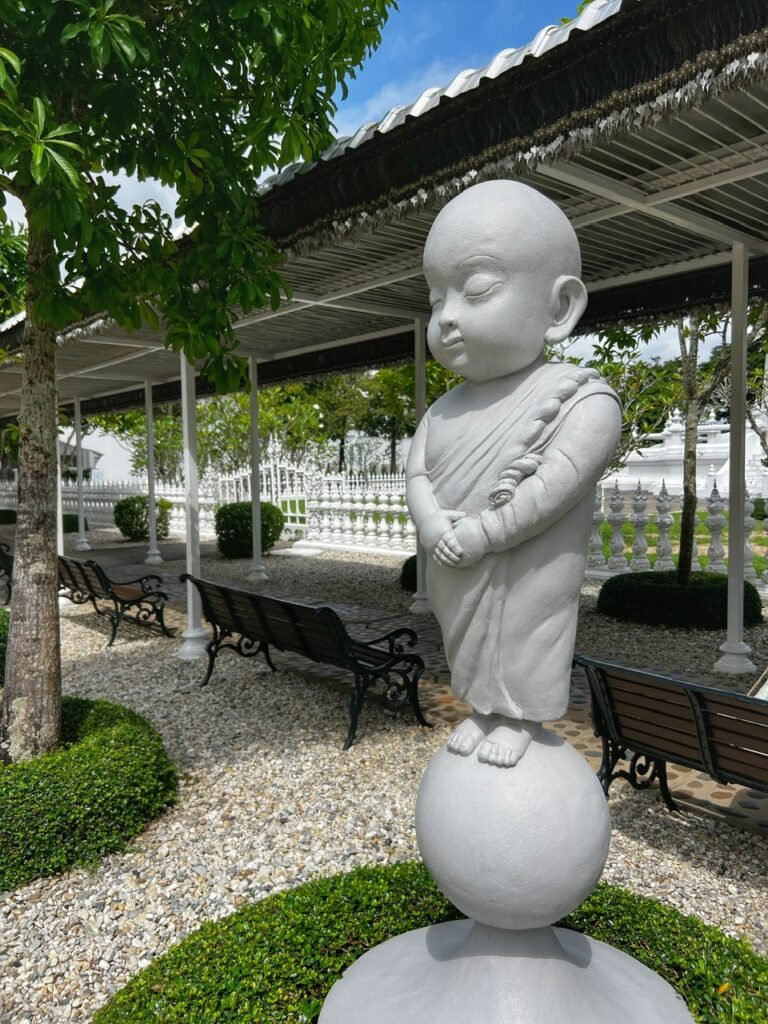
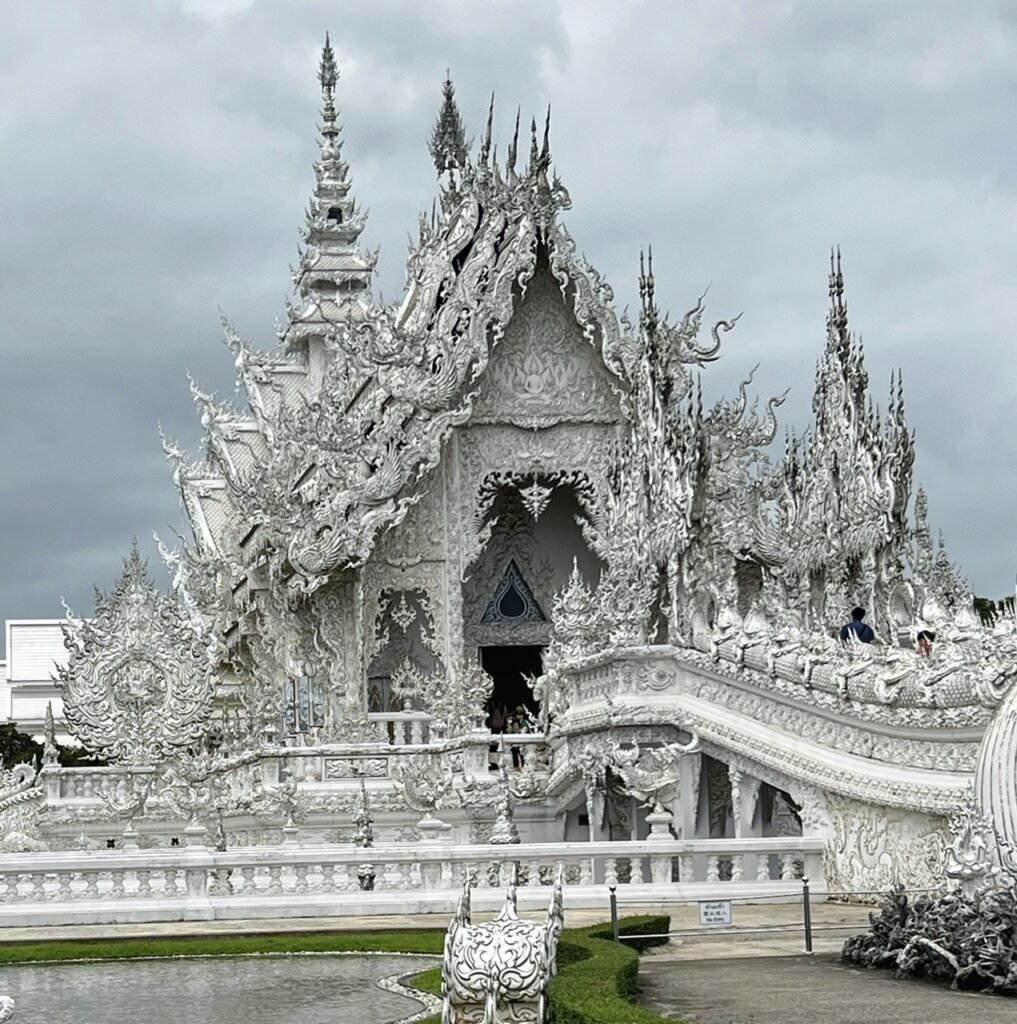
Little baby Buddhas line the perimeter.
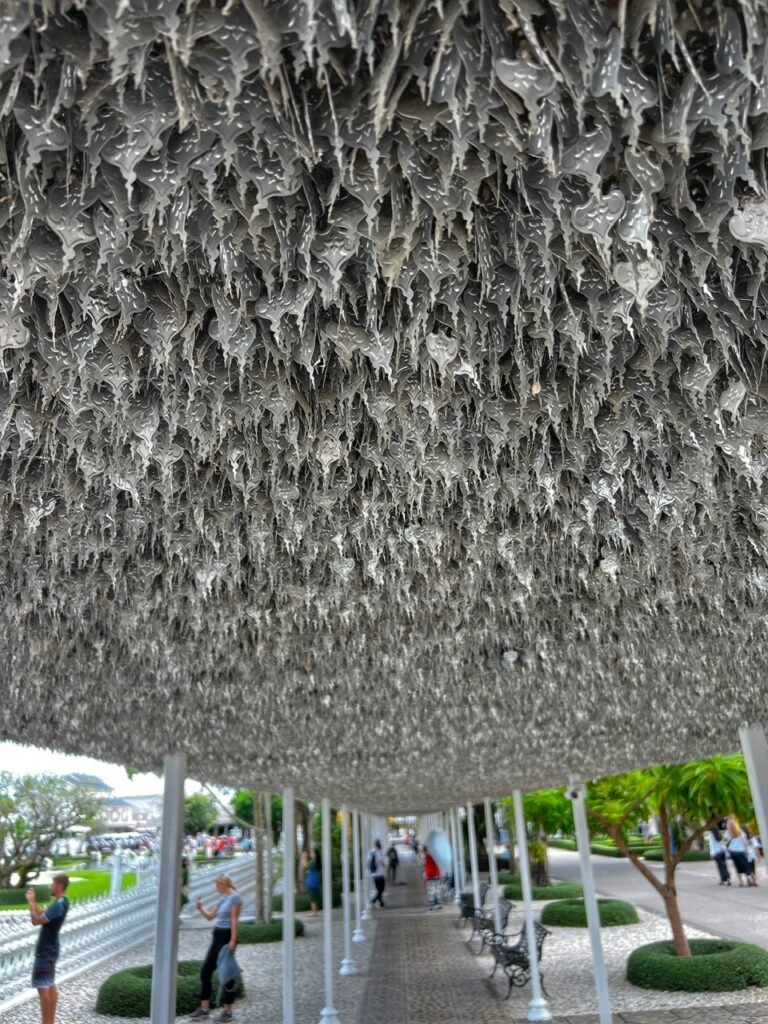
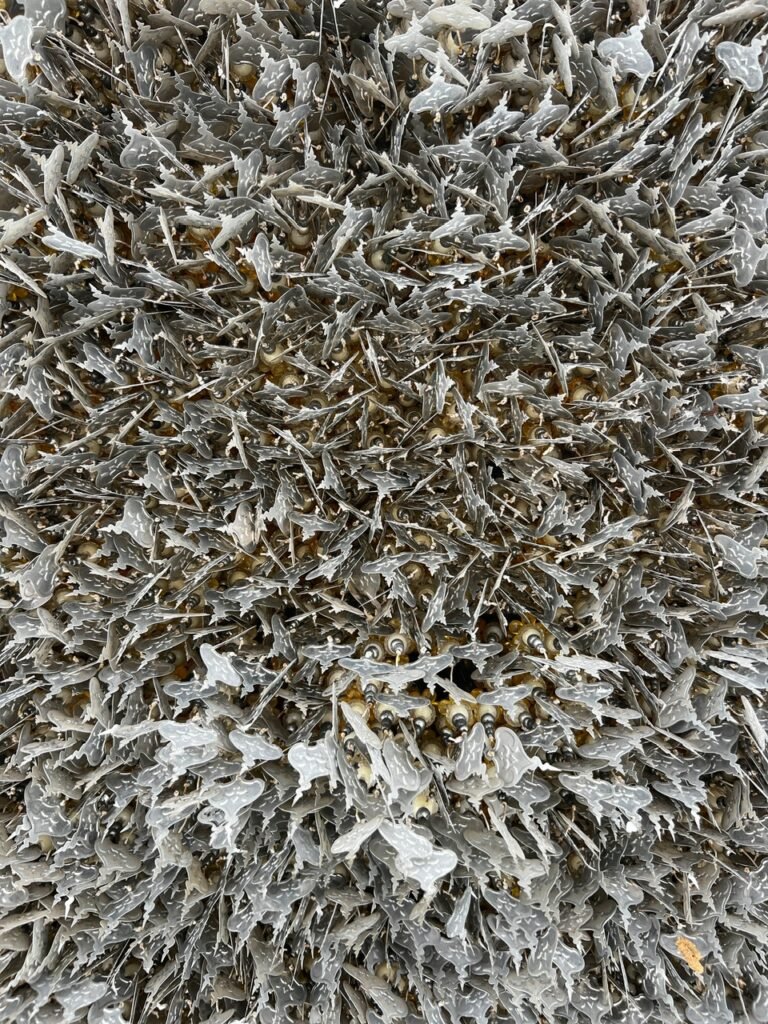
The ceilings framing the perimeter walkways are lined with a thick and seemingly endless supply of silver tags, which must be offerings? It’s kinda like a cheap dive bar in the States with dollar bills, but a helluva lot more classy…
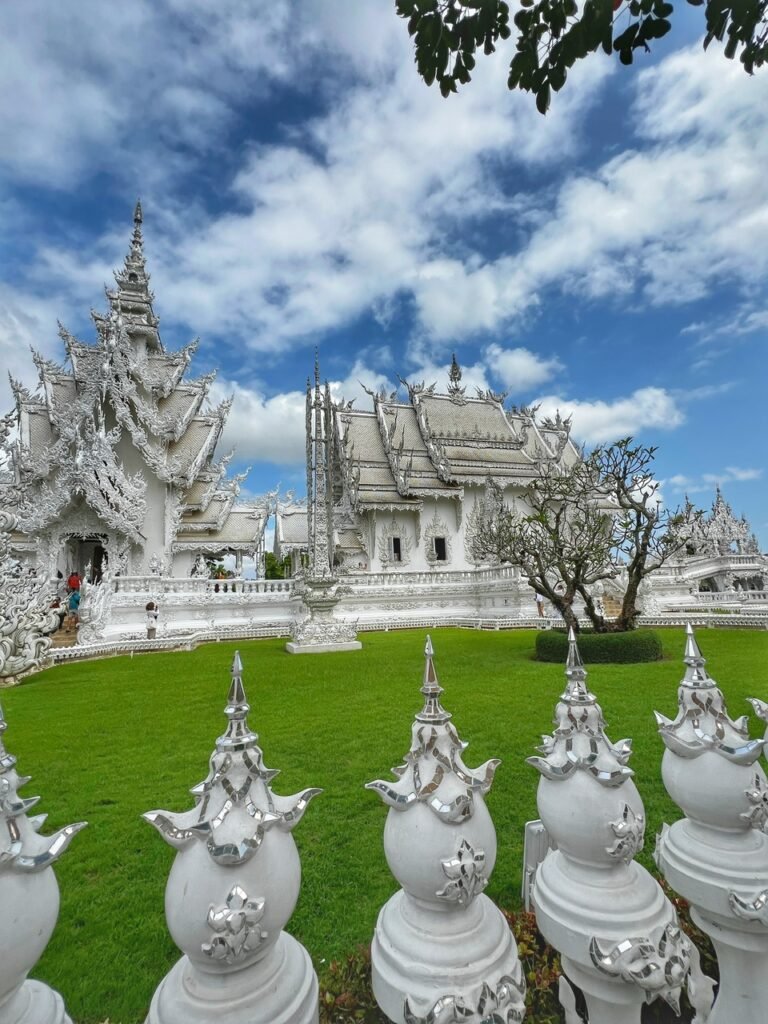
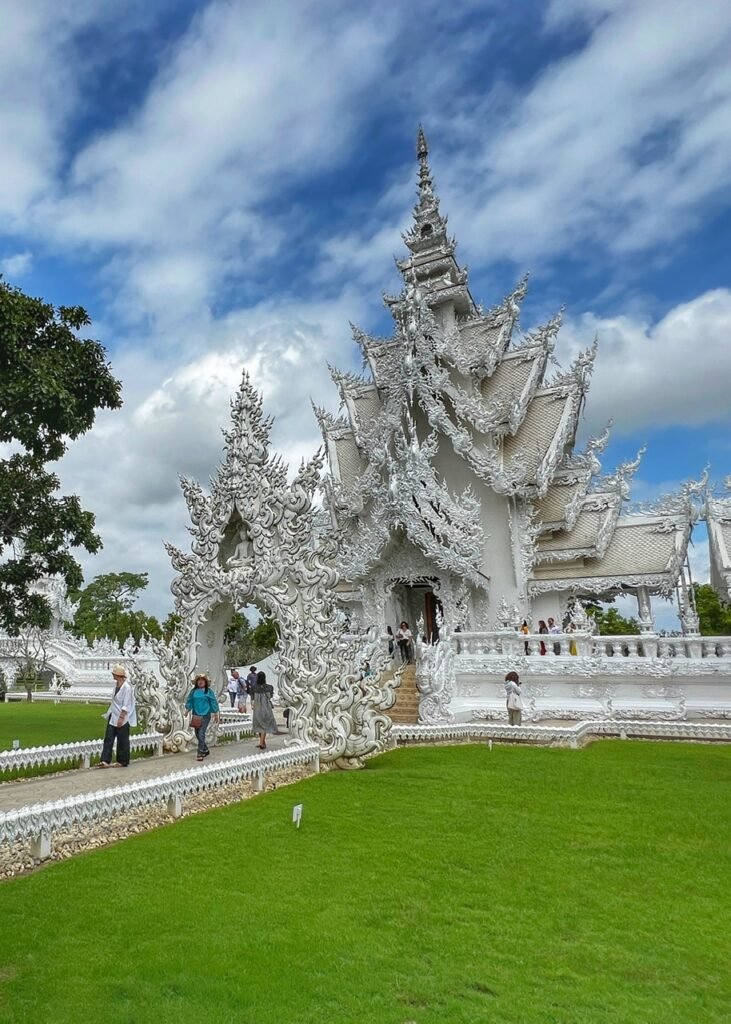
The artist unsurprisingly created a white temple as a symbol of purity. The temple’s white color represents the purity of the Buddha, while the use of mirrored glass mosaics throughout the structure symbolizes the Buddha’s wisdom shining across the universe. While the temple follows traditional Thai architectural principles, it also includes modern, pop culture references.

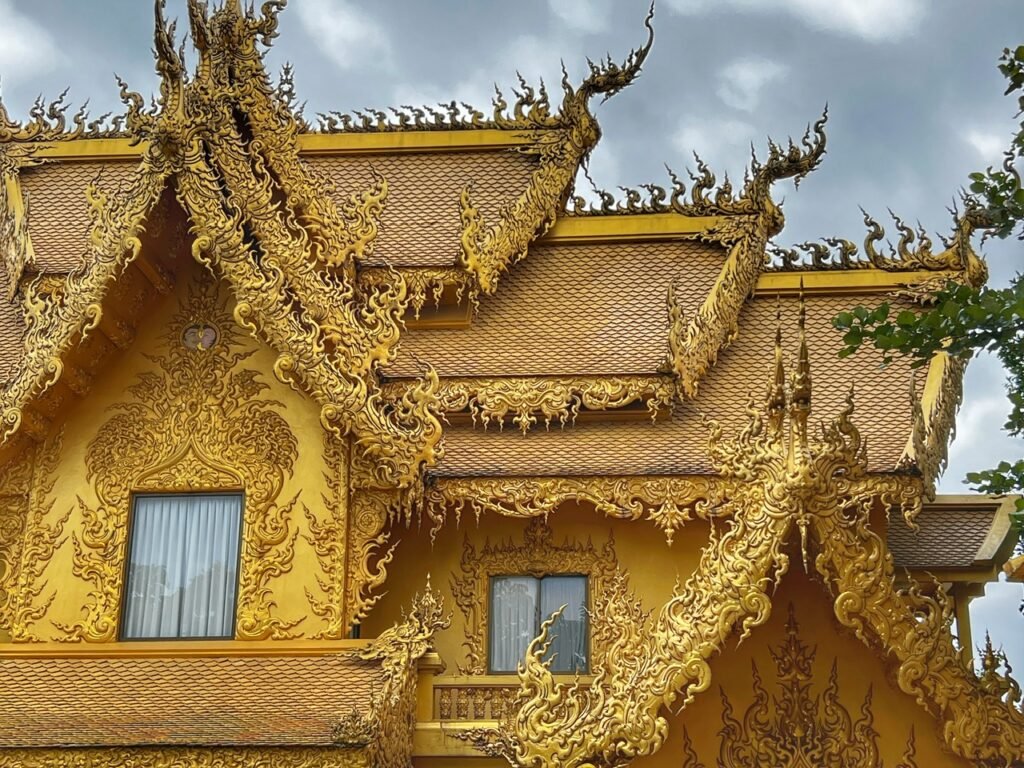
The piles of sloping rooftops are pagoda-esque and host a series of smoky swirls reaching toward the heavens, while the nearby golden temple truly looks like it could be on fire.
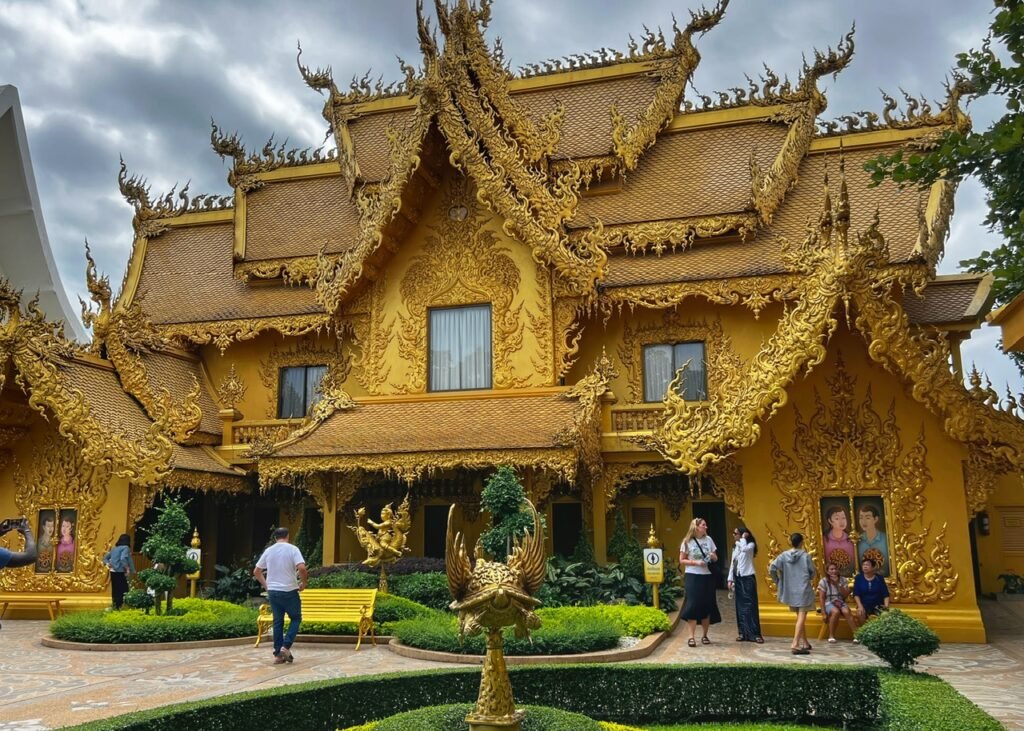
What a masterpiece!
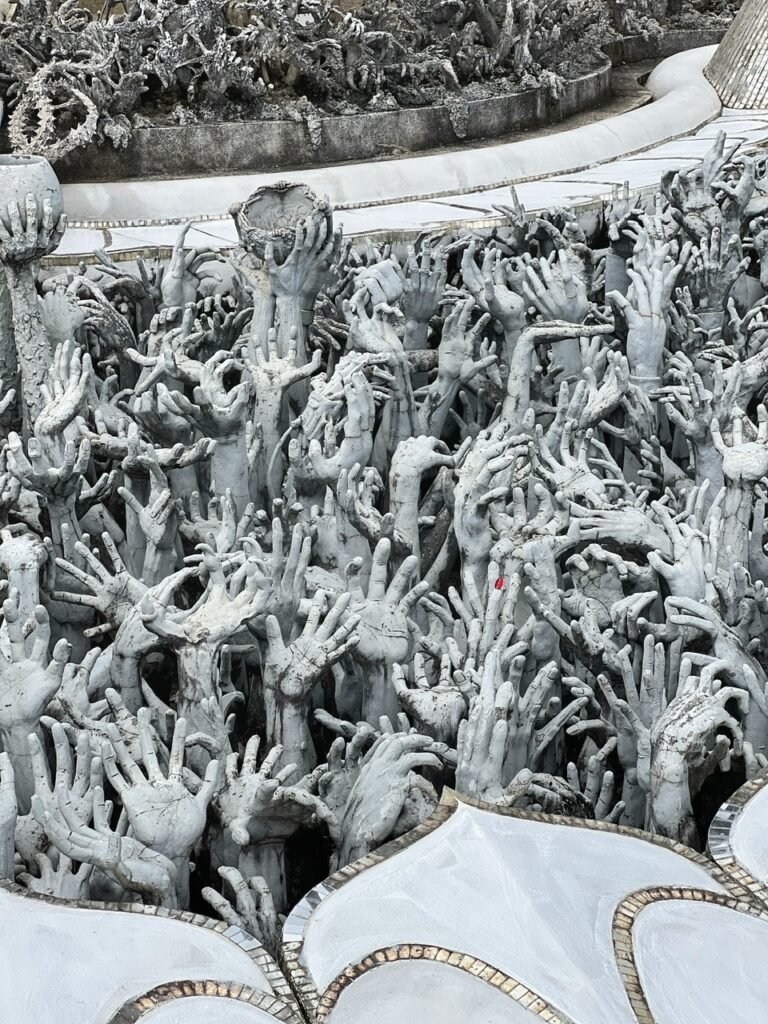

Before the bridge, sculptures of outstretched hands symbolize desire, greed, and human suffering.
The Blue Temple: Wat Rong Suea Ten
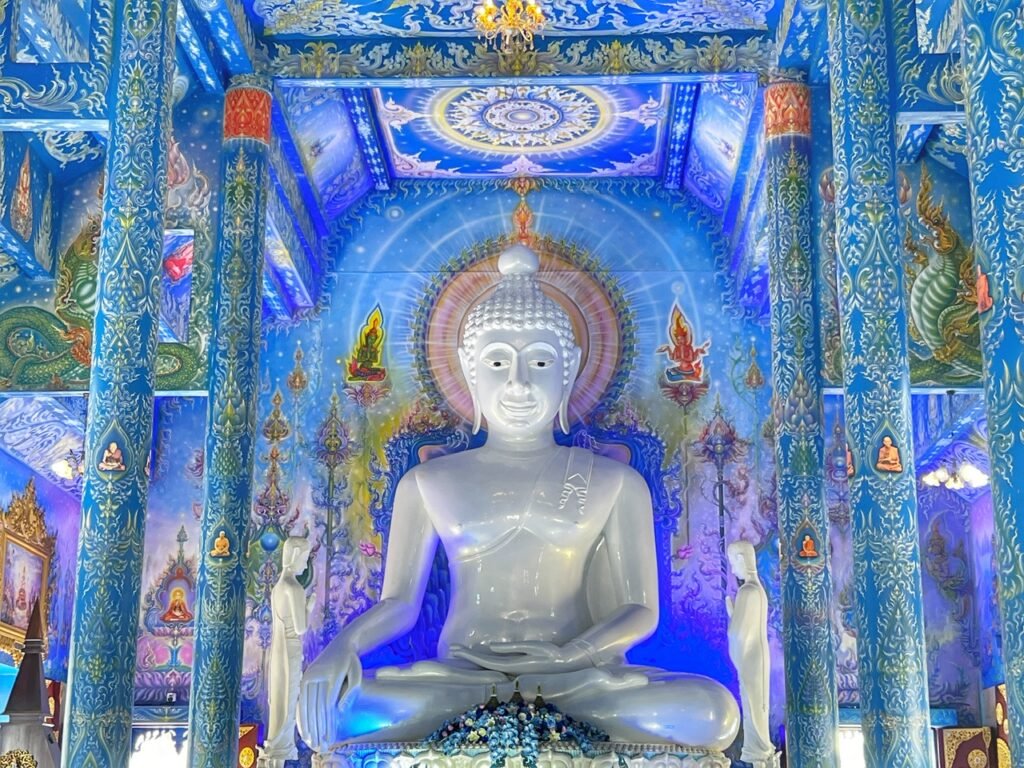
Wat Rong Suea Ten, or the Blue Temple, had the most ethereal interior of them all. With its floor to ceiling pearly white Buddha and its cerulean swatches blended with gold and other color pops, the energy inside is just hypnotic.
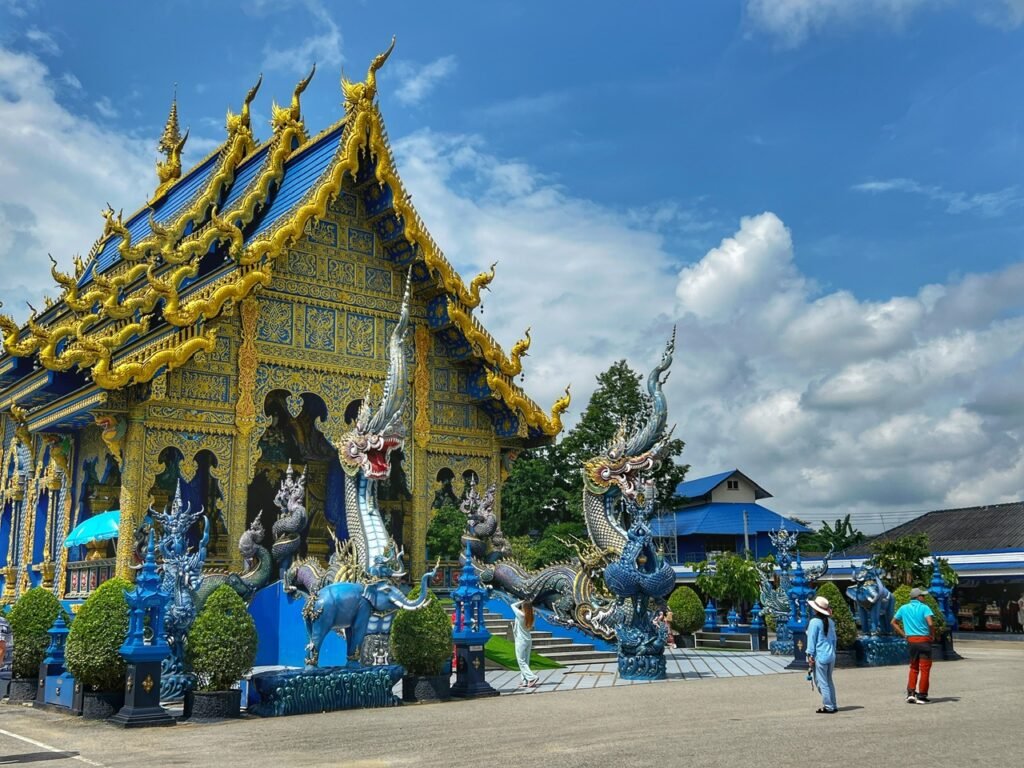
It was built by a student of the guy who did the white one. The name translates to the “Temple of the Dancing Tiger”. It is said that in the past, tigers used to roam freely in the area, hence the name.
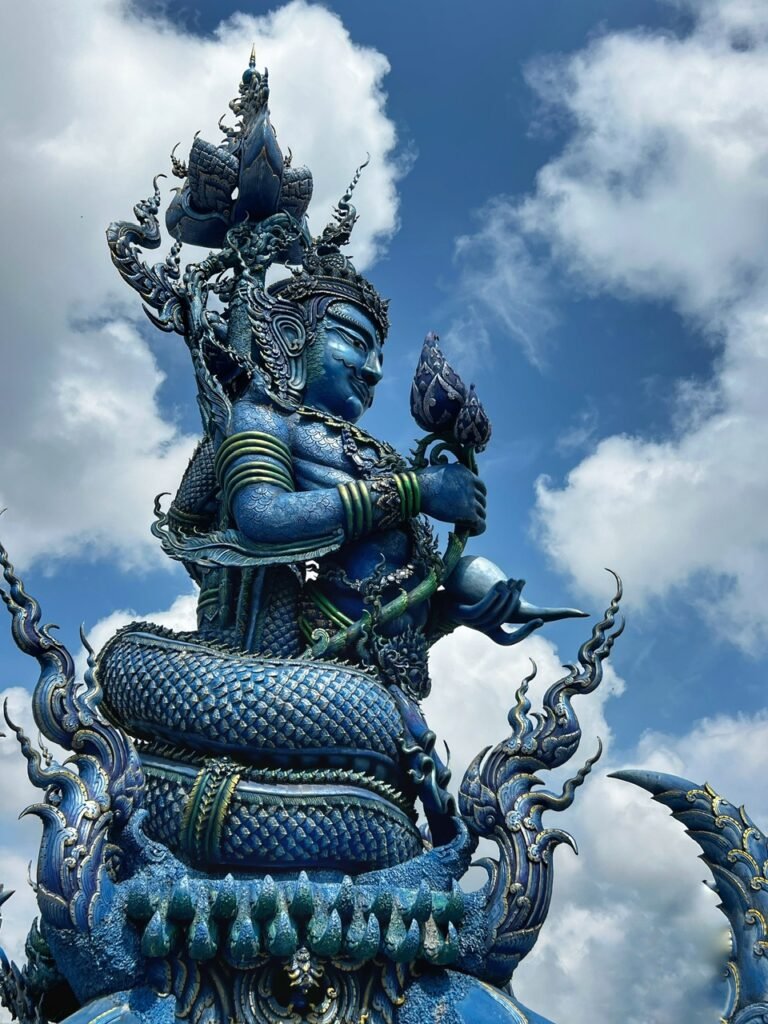
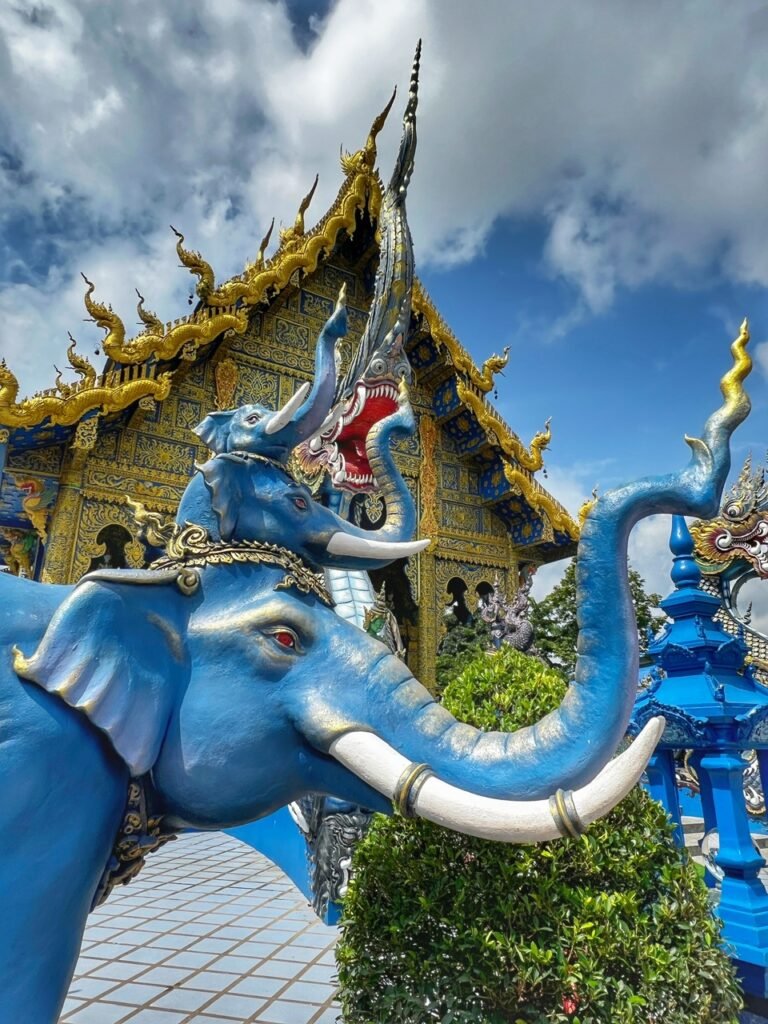

The mystical blue color represents Dharma, the Buddhist teachings, and symbolizes the infinite. It feels a bit like the Sagrada Familia of the Buddhist world with mysticism and glory at every turn. The use of deep blue and gold throughout the temple gives it a dreamlike, otherworldly feel, as do things like three-headed elephants, and green gods with pencil moustaches who could have crawled out of the Wizard of Oz’s Emerald City.
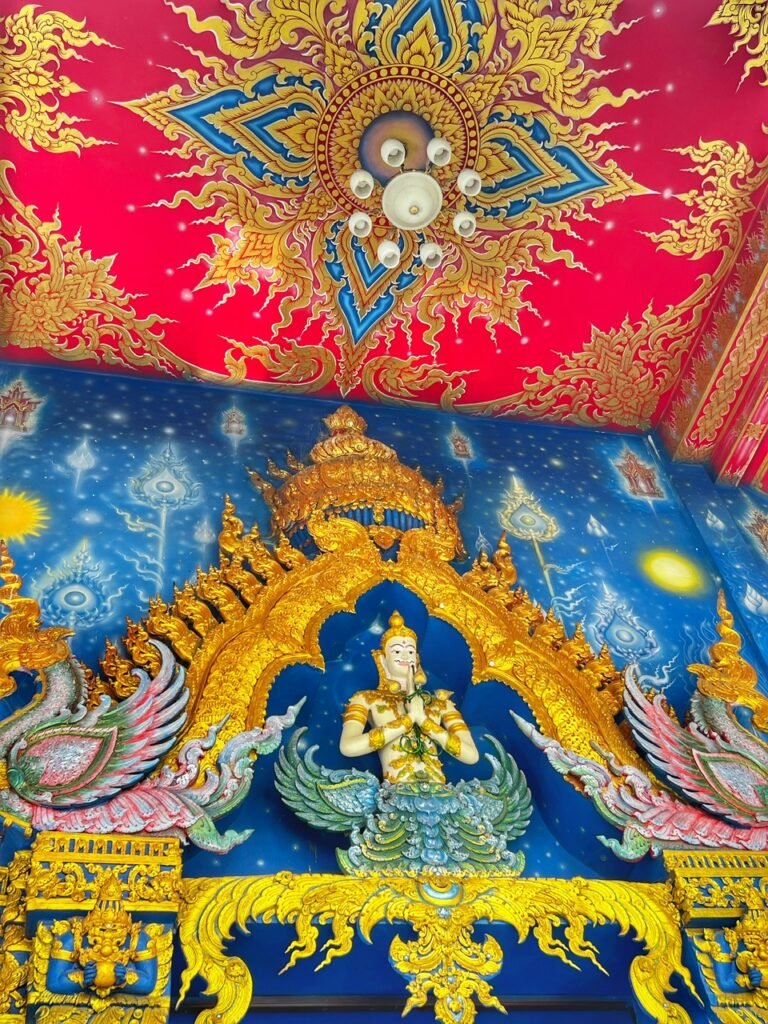
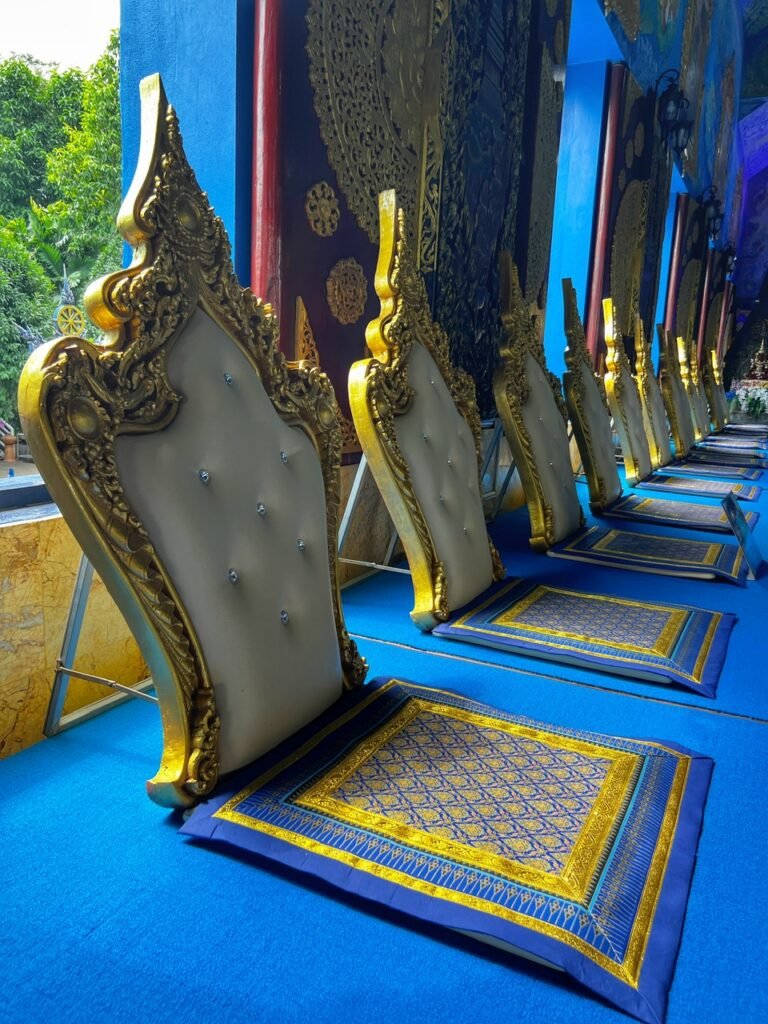
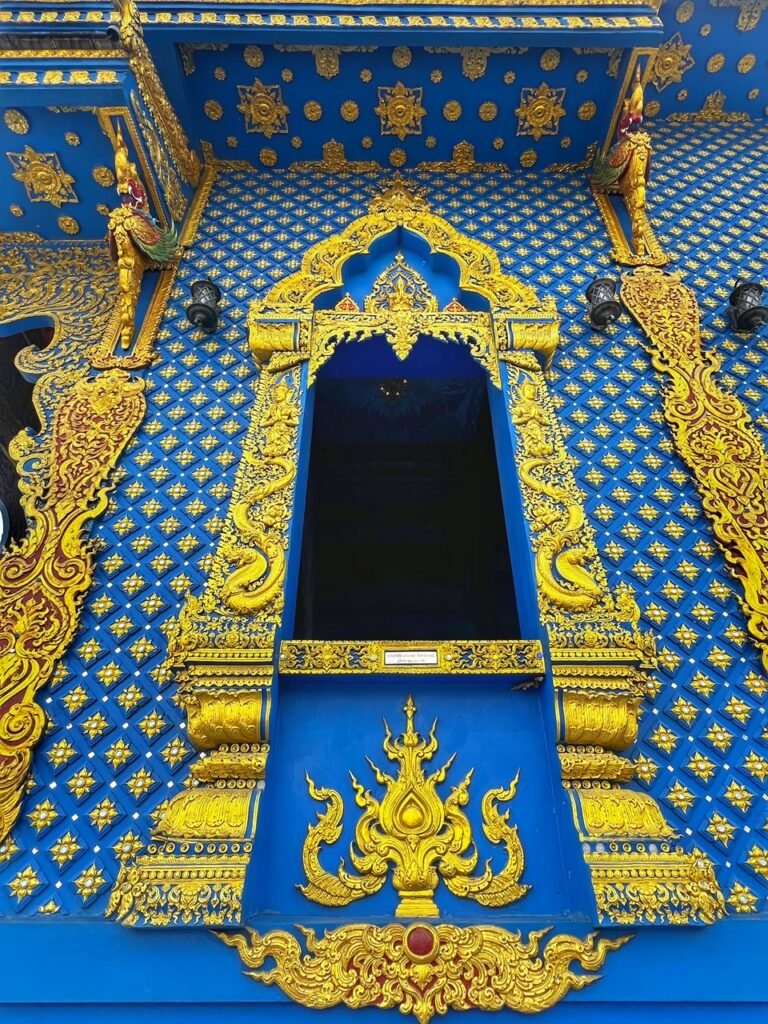
The interior is coated with elaborate murals that depict Buddhist teachings and mythological stories. These murals feature a combination of traditional Thai art with modern influences, continuing the fusion seen throughout the temple. There are also fun chairs in which only orange-cloaked monks get to recline, and magnificent details encircle the exterior windows.

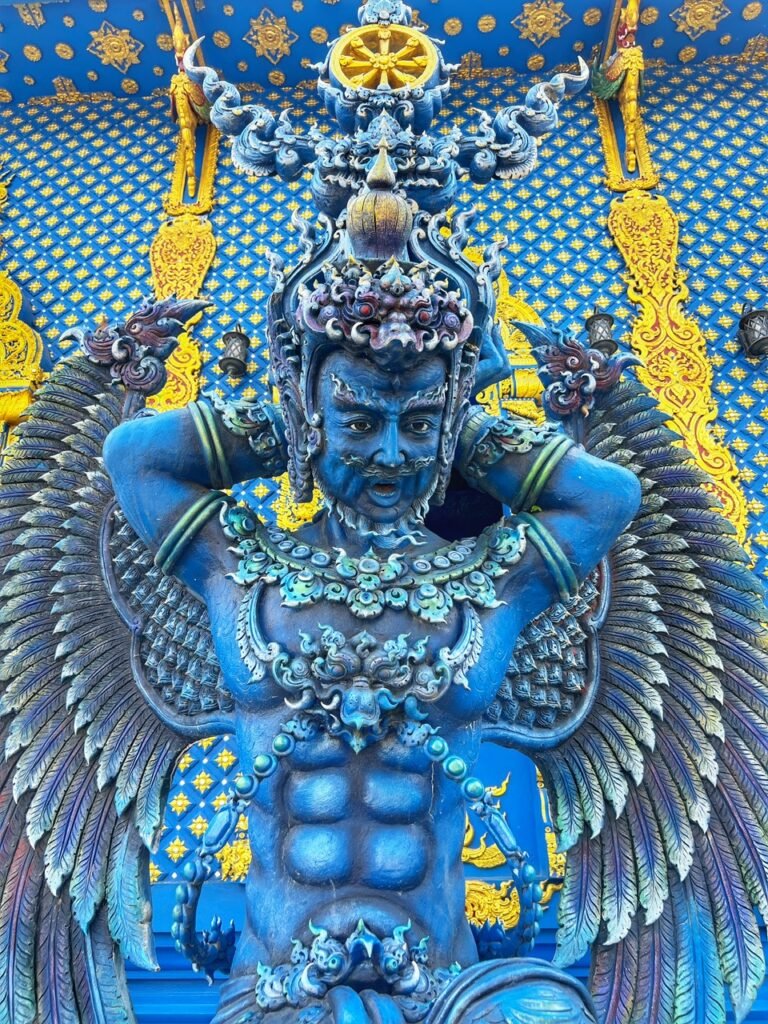
Magical mirrored balls frame the posts as a god who doesn’t seem too keen on the noise from all the tourists around him. This temple is free to enter, probably much to his dismay.

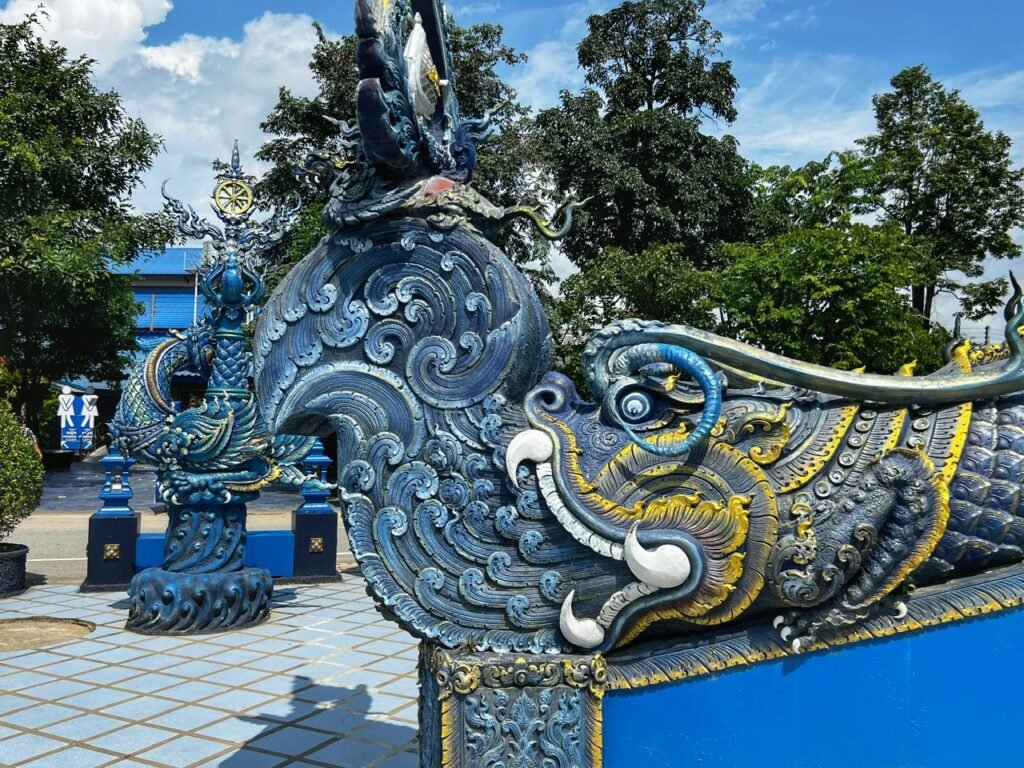
The back of the temple is a strangely classy contrast to the front. Swirls of blue smoke…or oceanic waves cascade from a dragon’s mouth.
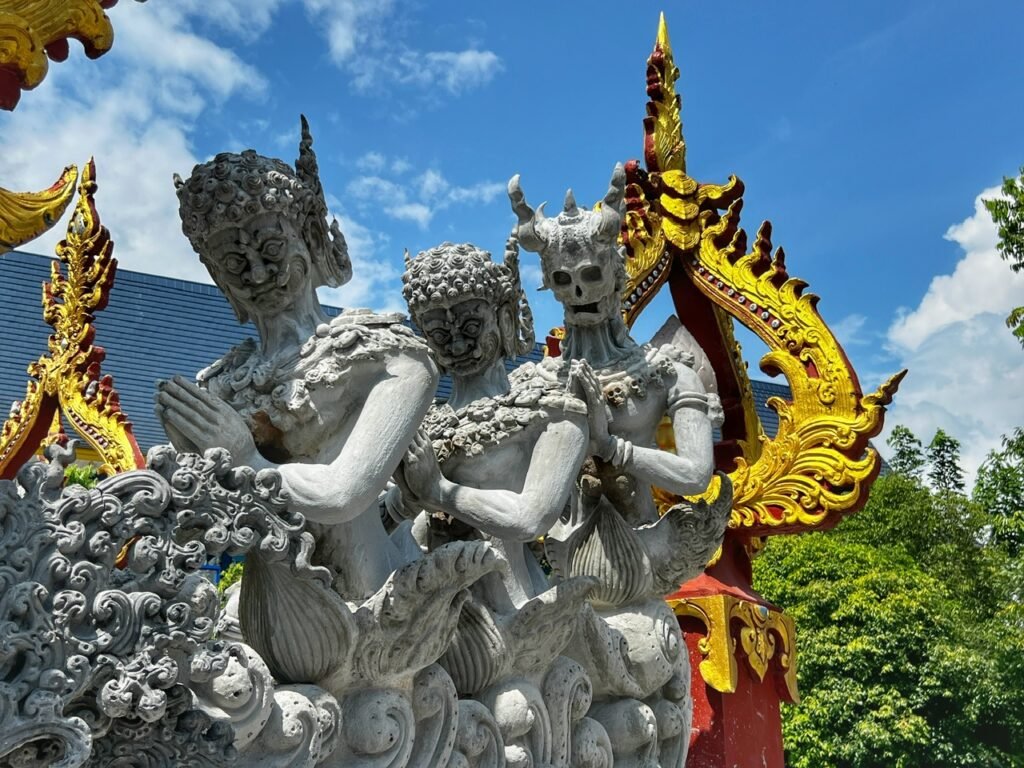
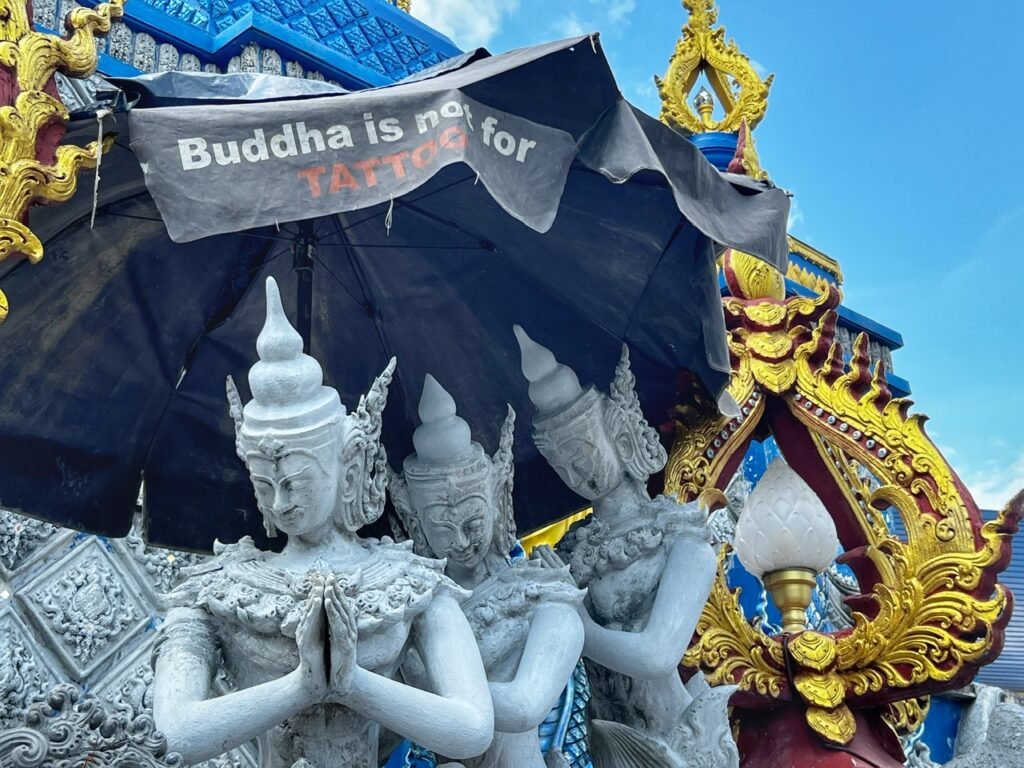
Creepy faces depicting death, and more gentle faces reminding ignorant tourists of a valuable lesson before heading to get their SE Asia ink.
Wat Phrathat Doi Khao Kwai

The interior of Wat Phrathat Doi Khao Kwai is very busy with some electric shades and images. We were able to walk here from our apartment in about an hour and it was completely empty, and free.


To get there you had to ascend a picturesque pastel and quite steep staircase in a magical forest. As you can imagine, it presented a long and sweaty pilgrimage up to Phrathat Doi Khao Kwai, which was perched far above the city and thus, had the best view of the ones we visited. At the top of the staircase, two ferocious looking guards called yakshas awaited to greet anyone ambitious (or crazy) enough to arrive on foot like us.
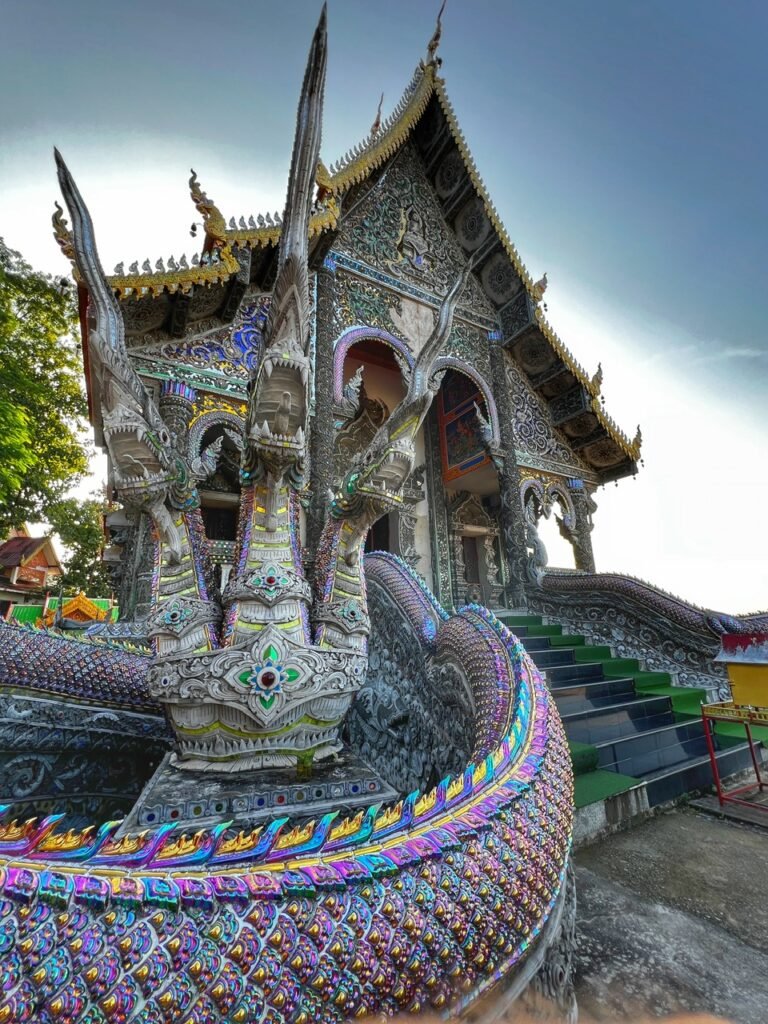

More fun creatures in the form of a three-headed metallic dragon with a very long and shiny caboose sneer at you as you get close to the wat itself. The evening sun catching glow on the dragon’s backside. The more you zoom in the more you can witness other intricate details.
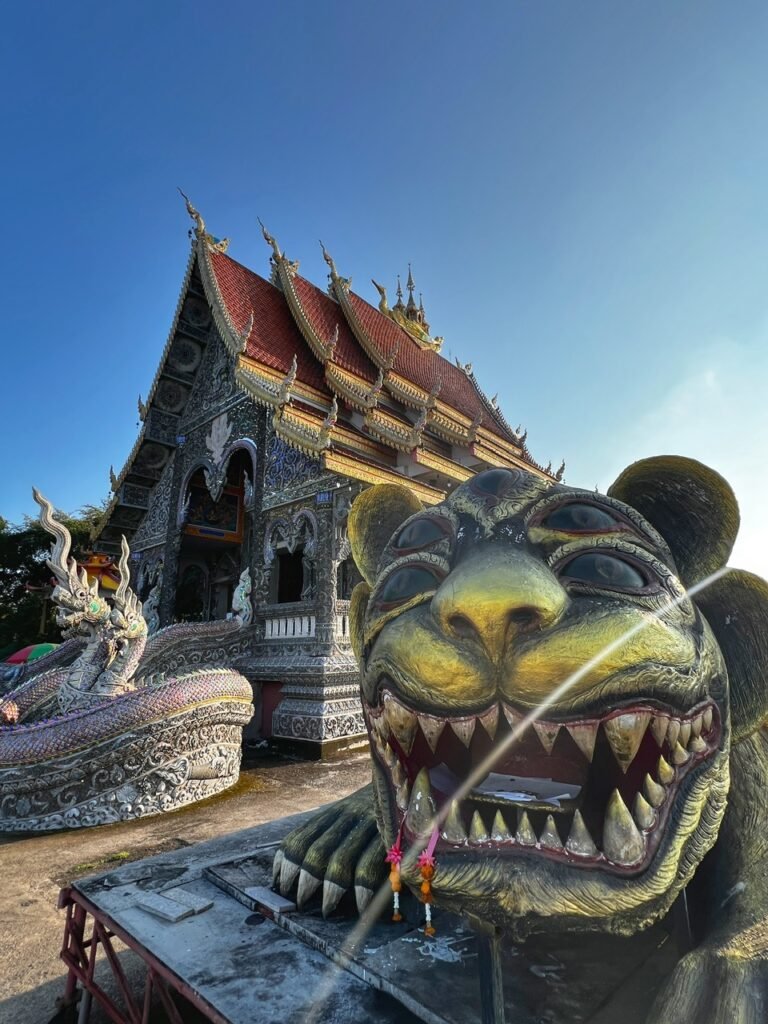
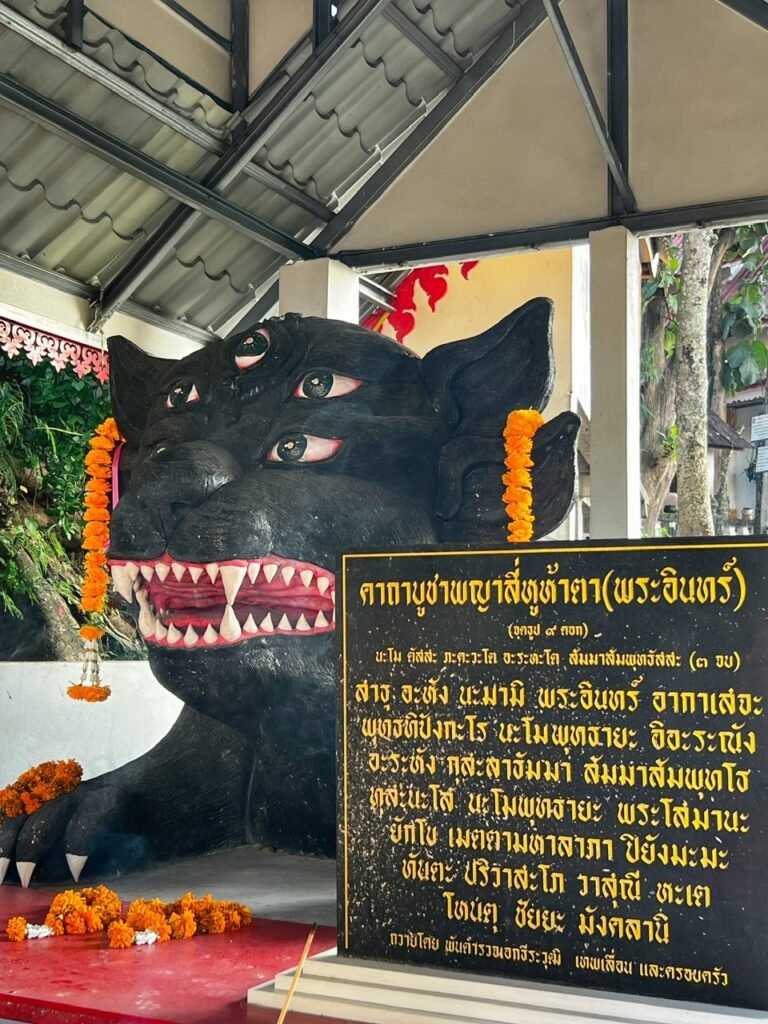
But this snarling bearish critter…with five-eyes and four-ears is perhaps the most eye-catching.…pun intended. He is Sihuhata, a northern Thai deity worshipped for his ability to bring wealth. Sihuhata translates to “four ears five eyes,” with “sii hoo” meaning “four ears” in Thai, and “ha dtaa” meaning “five eyes.” (Rambulatory)
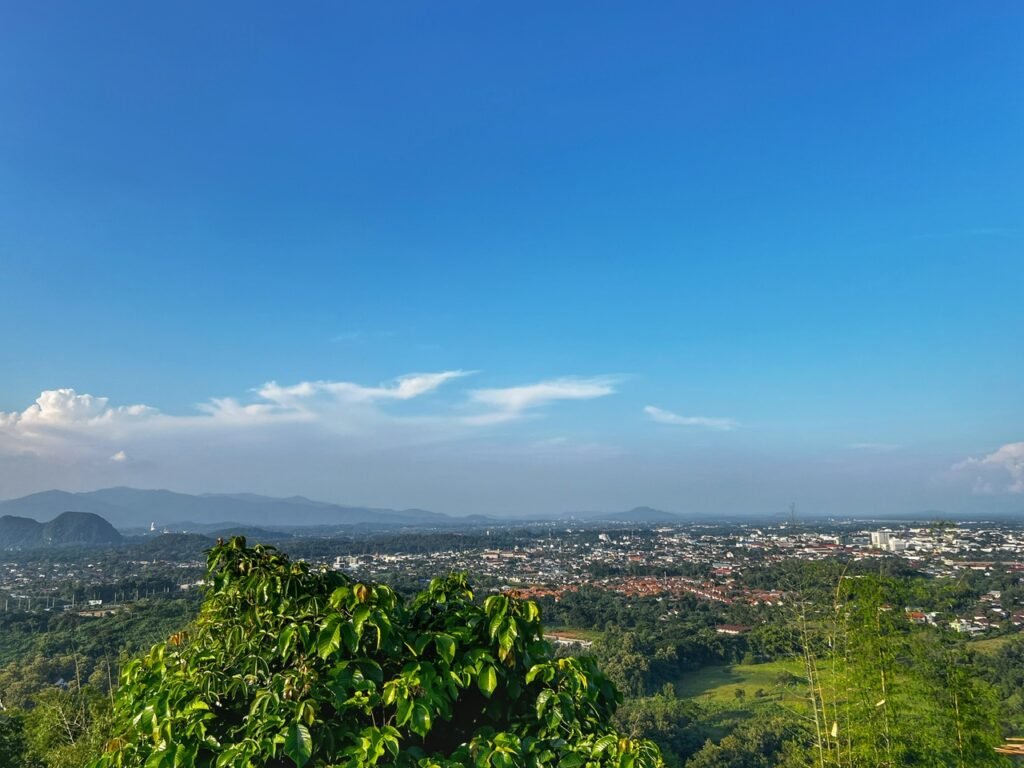
The view from the top
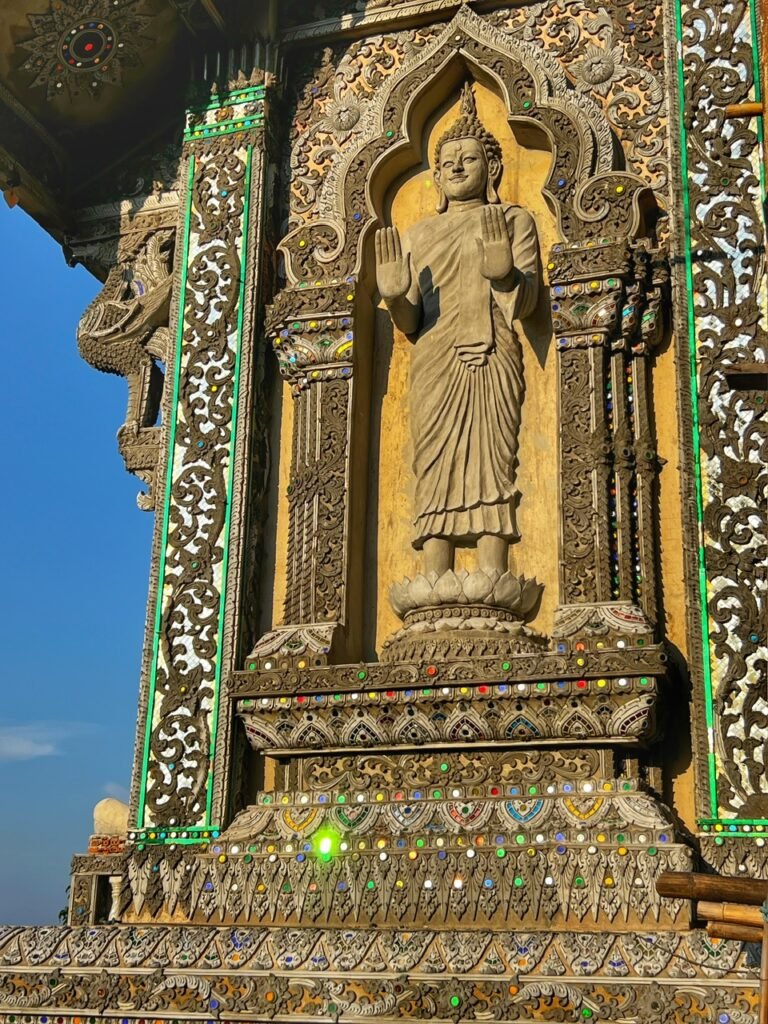
It’s as though Buddha was soaking in every bit of that sunset.
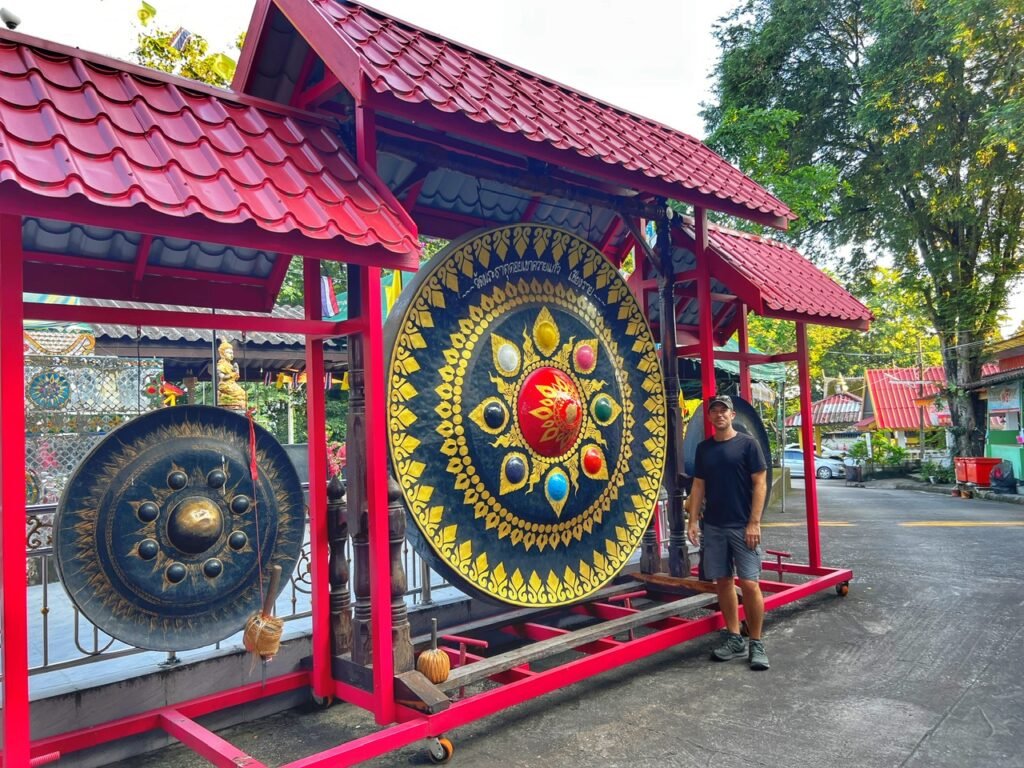
This site was packed with incredible details, including the most beautiful paint palette of a gong we’ve ever seen.
Wat Doi Phrabat

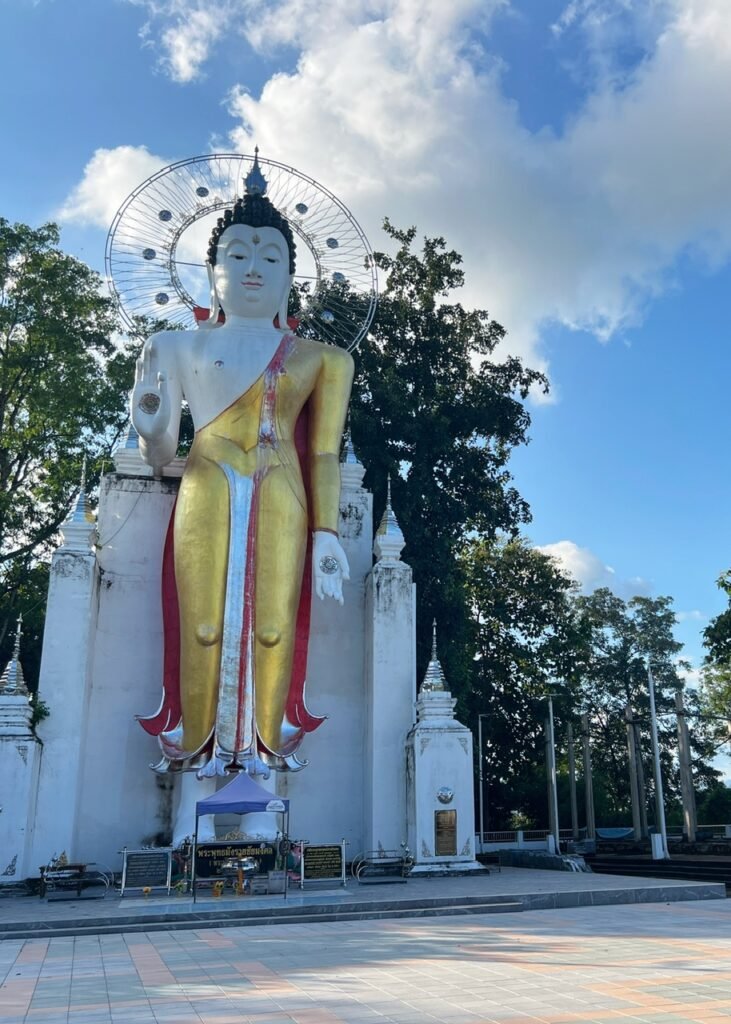
Another wat within walking distance of our place was Wat Doi Phrabat. From the entrance, we were able to capture this colorful image of a monk and his dog in a lovely tree-encompassed setting. The soaring standing Buddha at the top could be seen from far and wide.
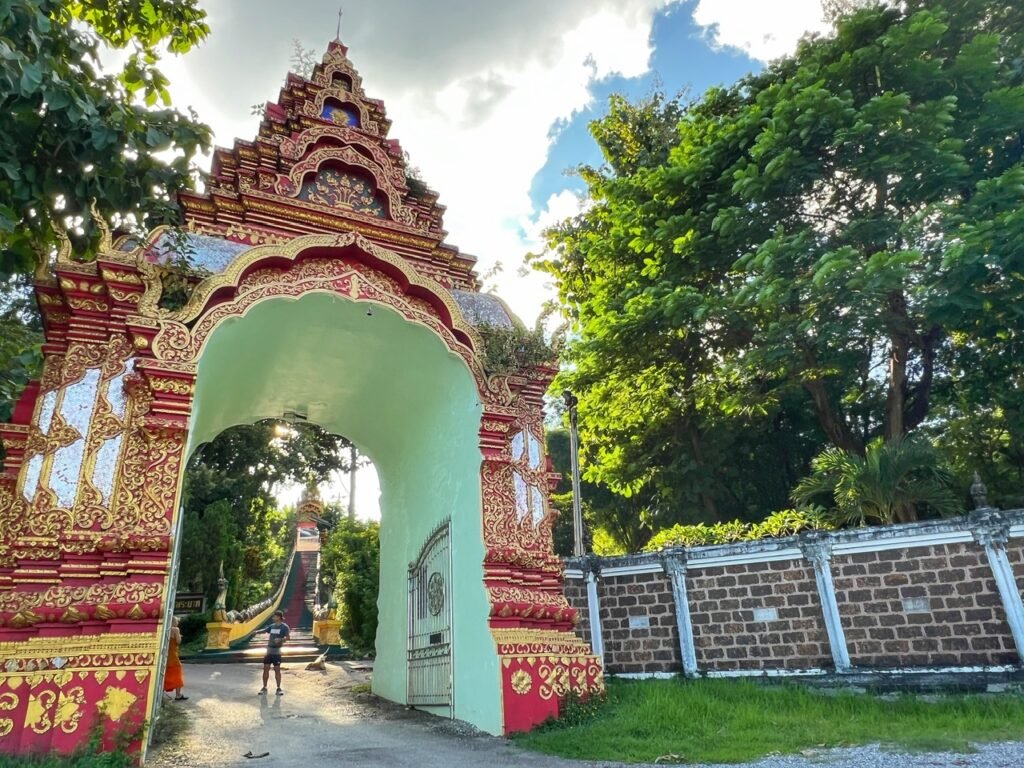

The entrance to the same wat, near a load of some very…orange…monk laundry, which was perched up a hill near the old airport runway.
Baan Dam Museum
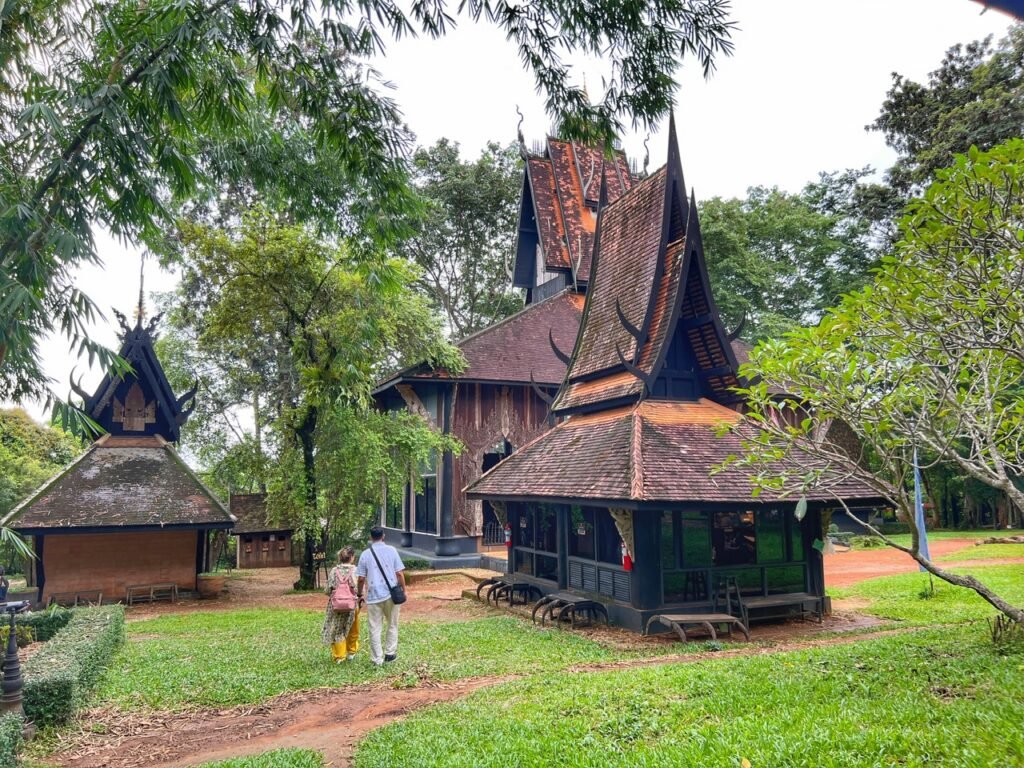
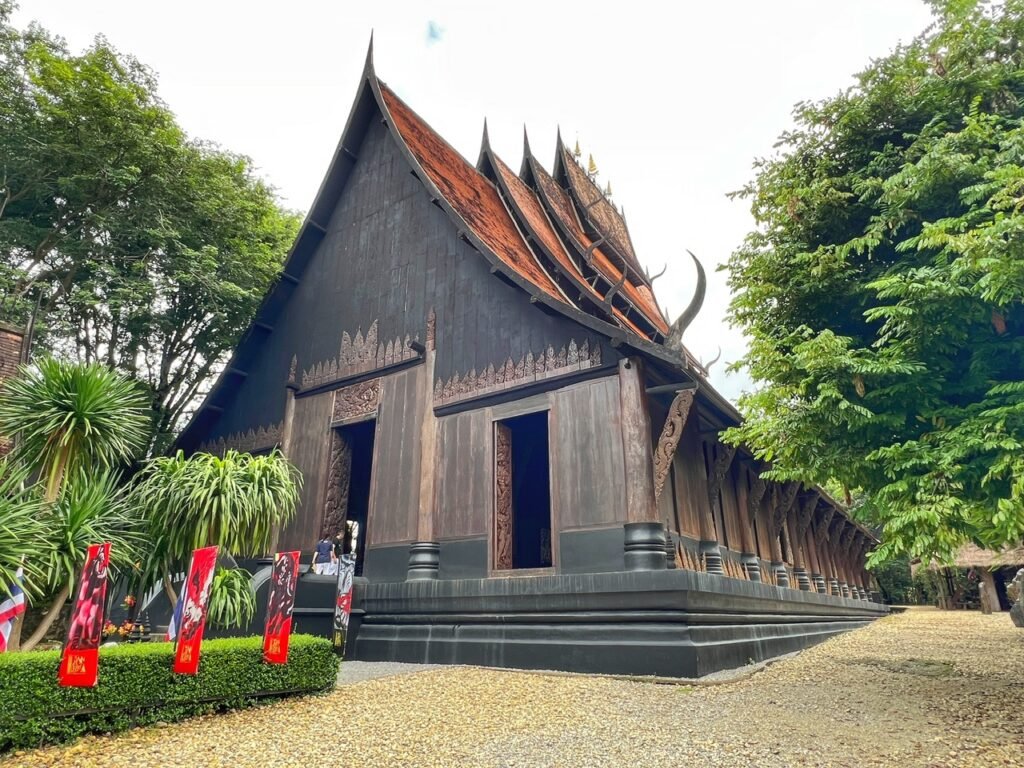
After our trip to Bangkok hospital it seemed like a good time to check out the mystical and expansive Baan Dam Museum as it was only a 12 minute walk away. In Thai, ‘baan’ means home or house and ‘dam’ means black. The Black House isn’t just one structure, but a collection of around 40 buildings of varying shapes, sizes and textures dotted around a serene garden. In it, you’ll find works created with bones, glass, skins, horns and wood…lots of wood, in both the real and figurative sense. 🤣 The gothic-looking wonderland was created by Thawan Duchanee, who is easily one of Thailand’s most celebrated contemporary artists. He lived from 1939-2014 and was at this residence during his final years.
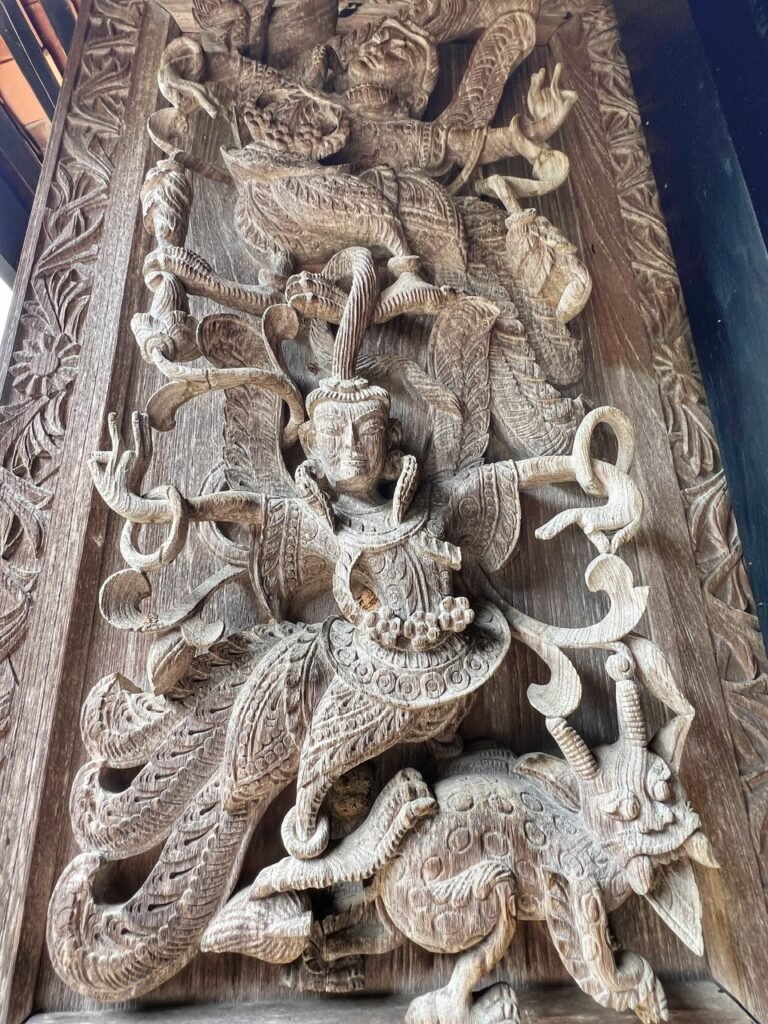
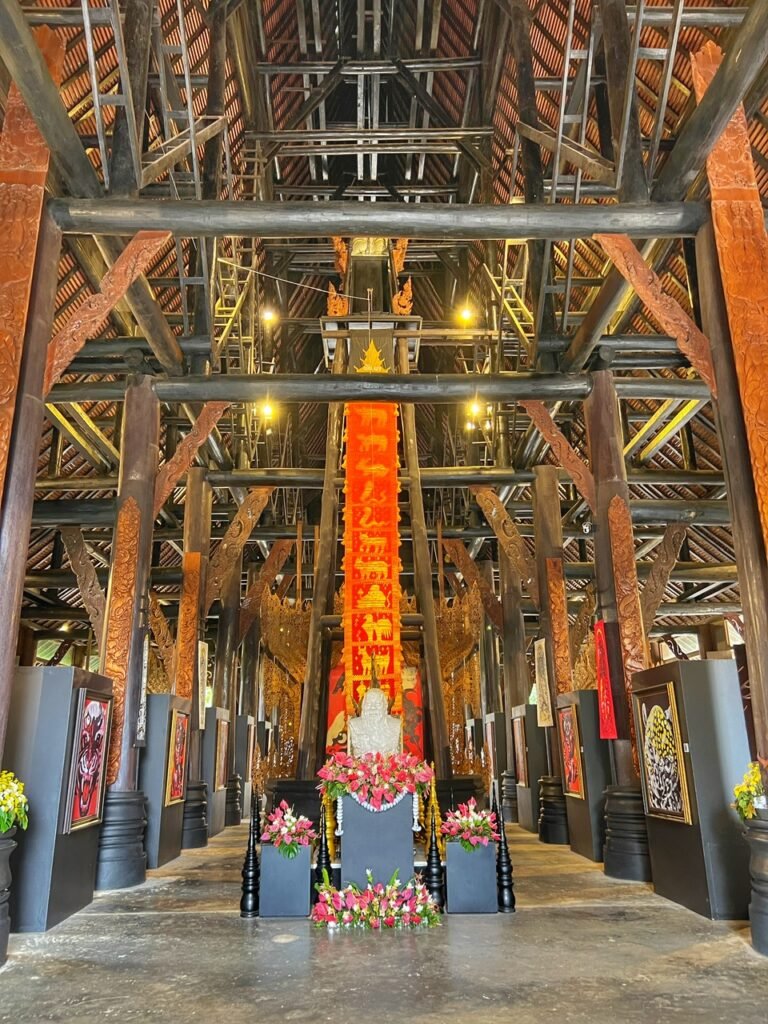
The soaring entrance to the facility takes you through a colossal wooden structure which looks like an elaborate Thai rendition of a livestock free barn with steeply sweeping rooflines, and intricately carved doors. His work often reflected deep spiritual and philosophical themes, rooted in Buddhism, mythology, and Thai cultural heritage.
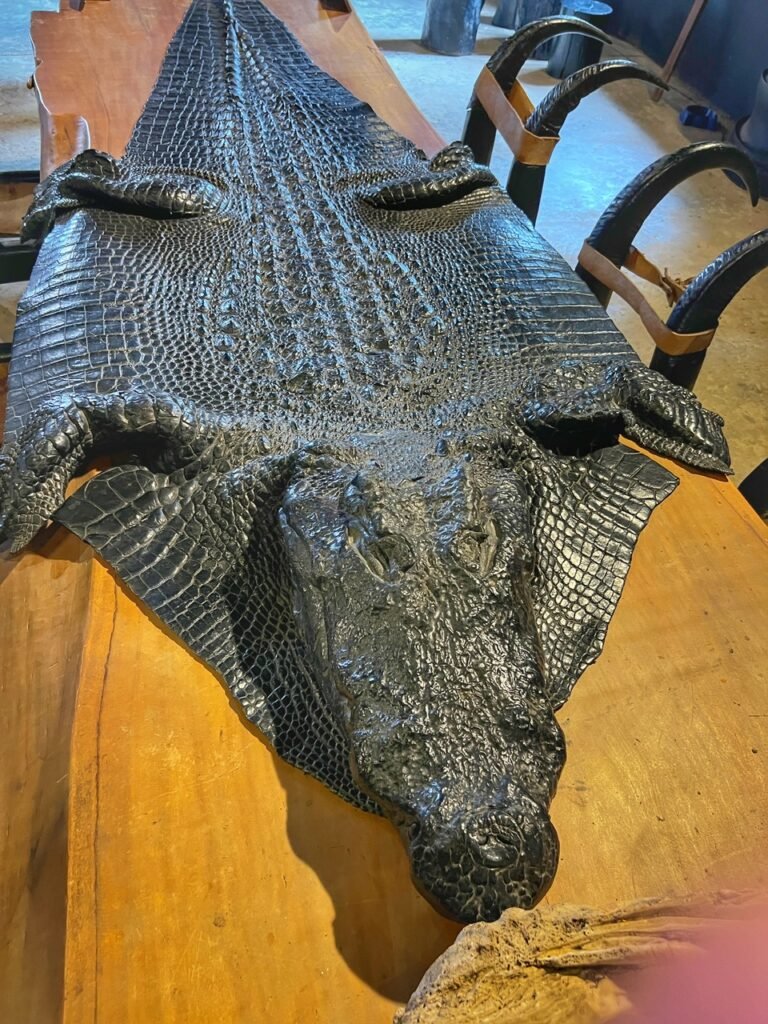

I’m sure he died of natural causes. Right? As did these water buffalo? That is quite a throne, however. And every piece within it is up-cycled animal parts. It seems like a place the Mola Ram from Temple of Doom might like to rip out a heart from.
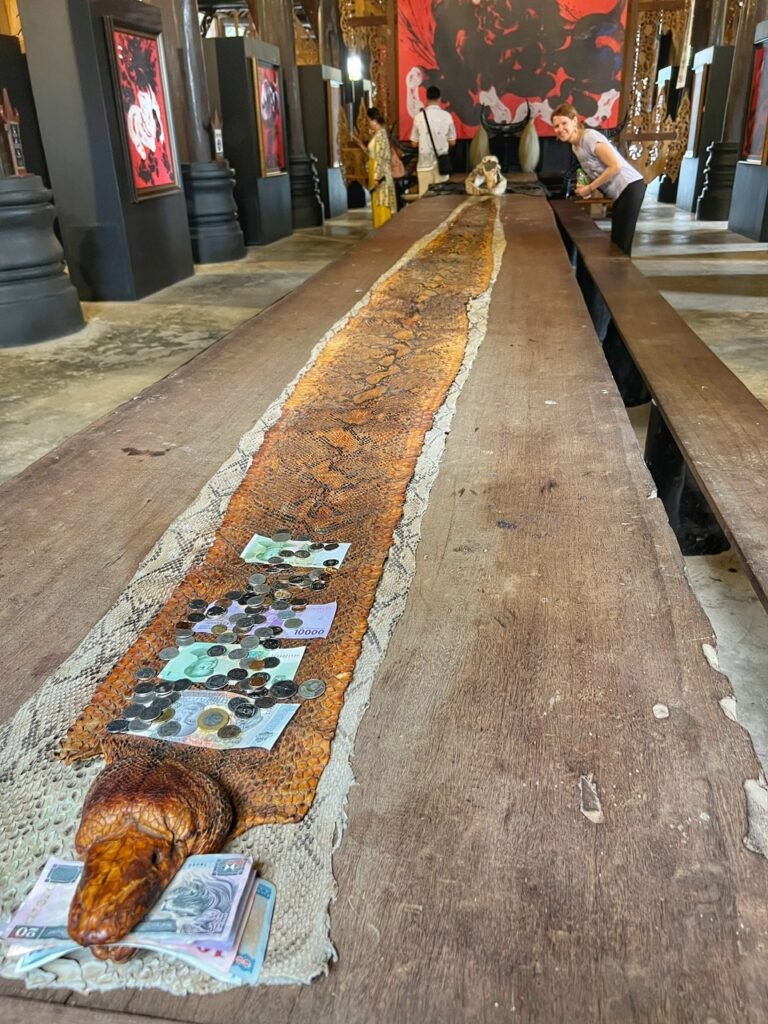
And on the table before him lay a quite lengthy python skin of which many people have interestingly made offerings to.
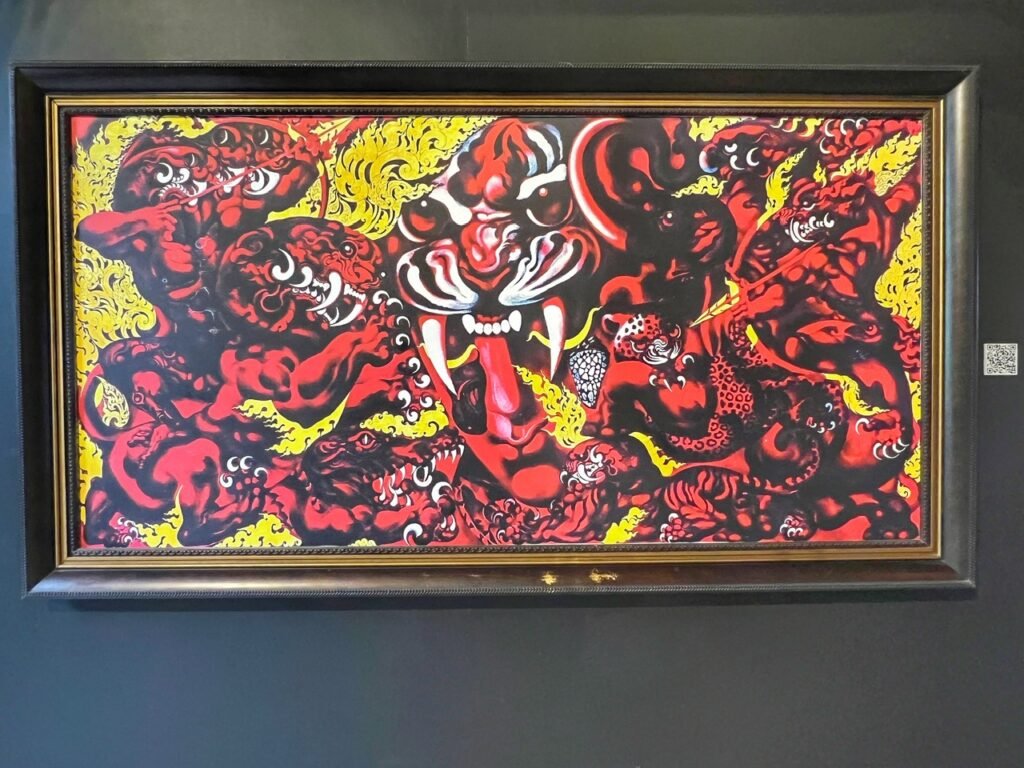
This guy clearly worked with more than a paintbrush. But when he did paint, it was intense. Kinda like a bad dream. This work is globally acclaimed “Battle of Mara” (2010) which he painted during his final, sick years.
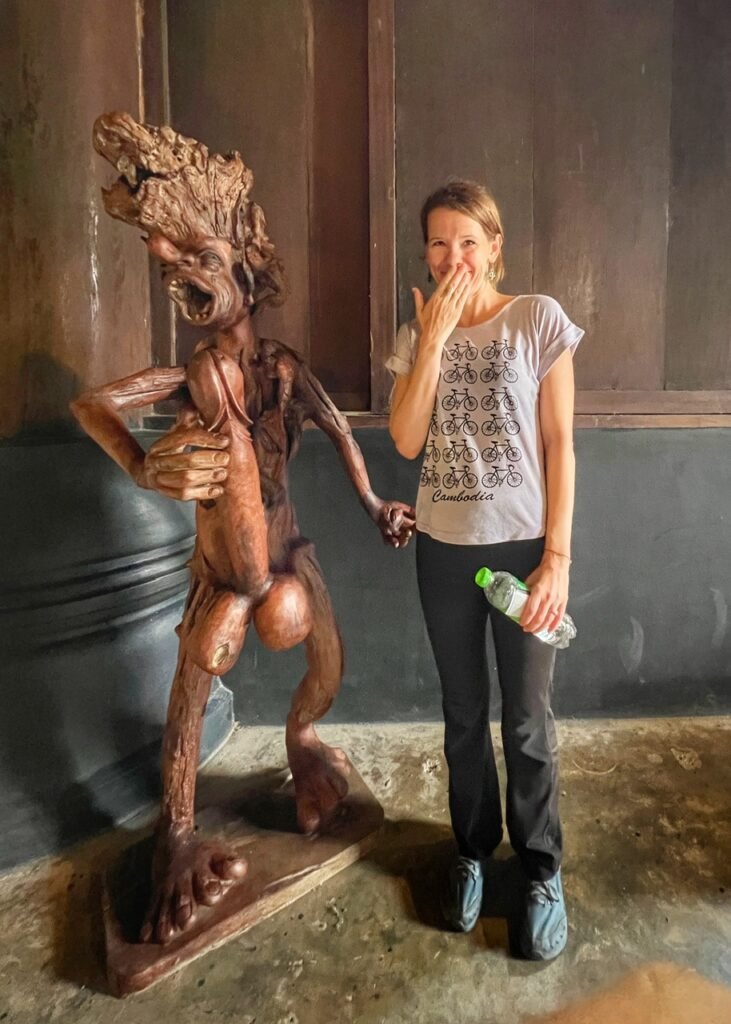

And Duchanee’s man-ish characters were intense! That hair reminds us of someone but we won’t say who! Thawan gained recognition for his powerful use of black-and-white contrasts, intricate detail, and symbolism, often exploring ideas related to life, death, and morality.
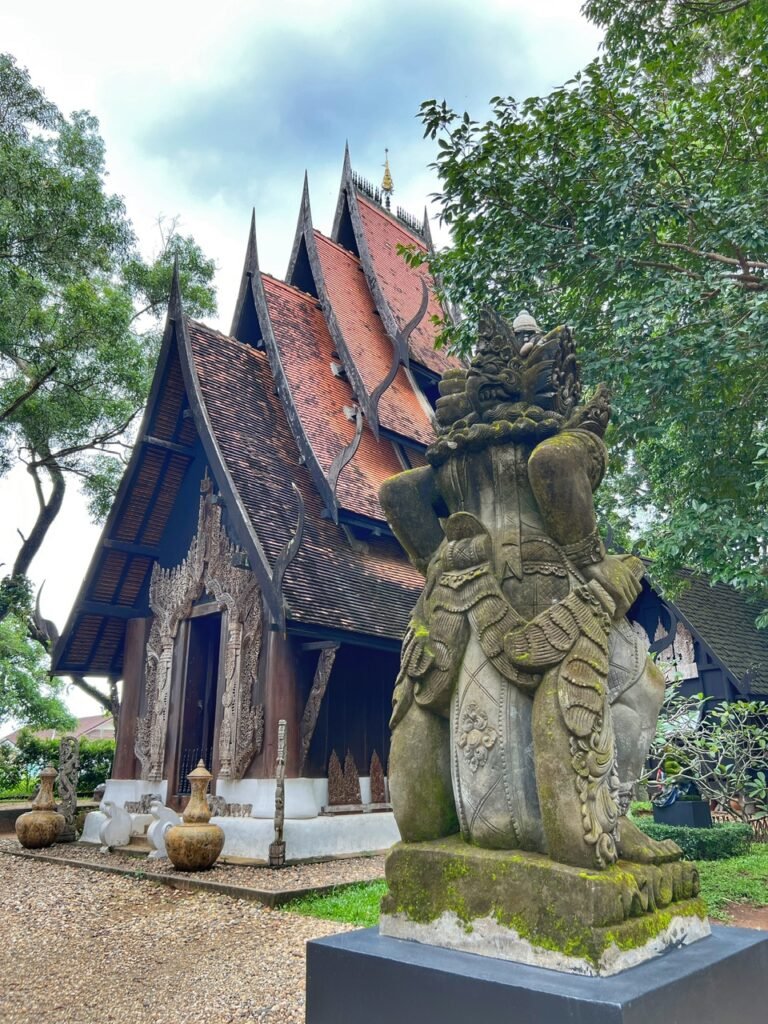
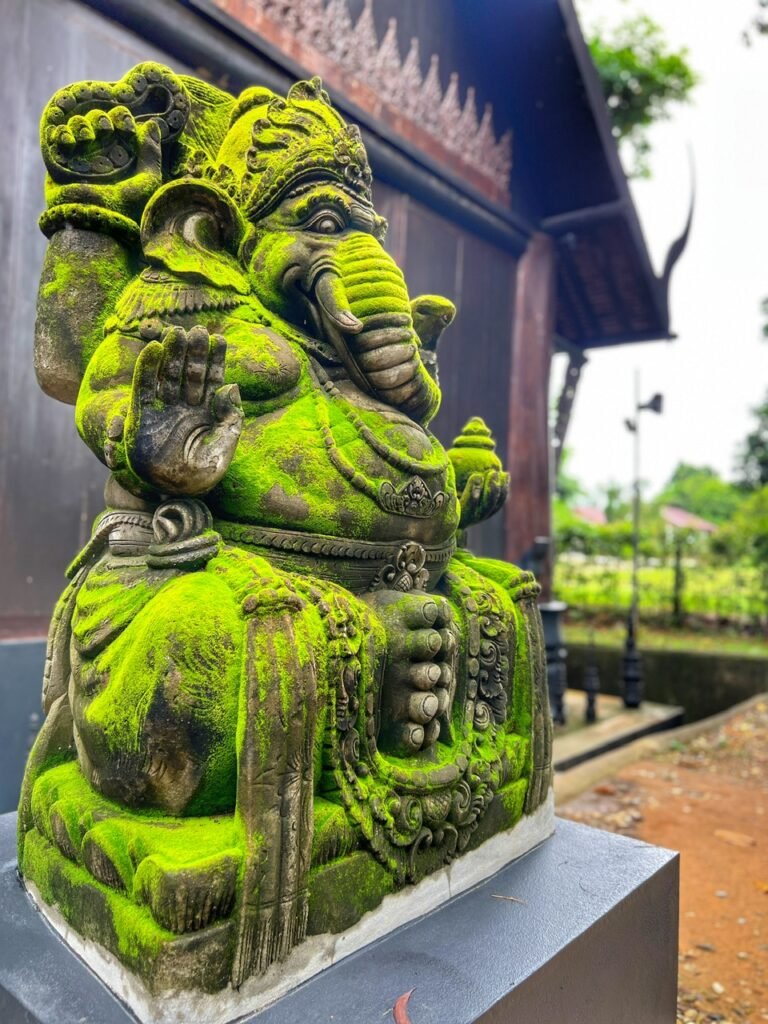
The grounds are a really beautiful place for some solitude, and in some places, it seems nature is trying to reclaim it.
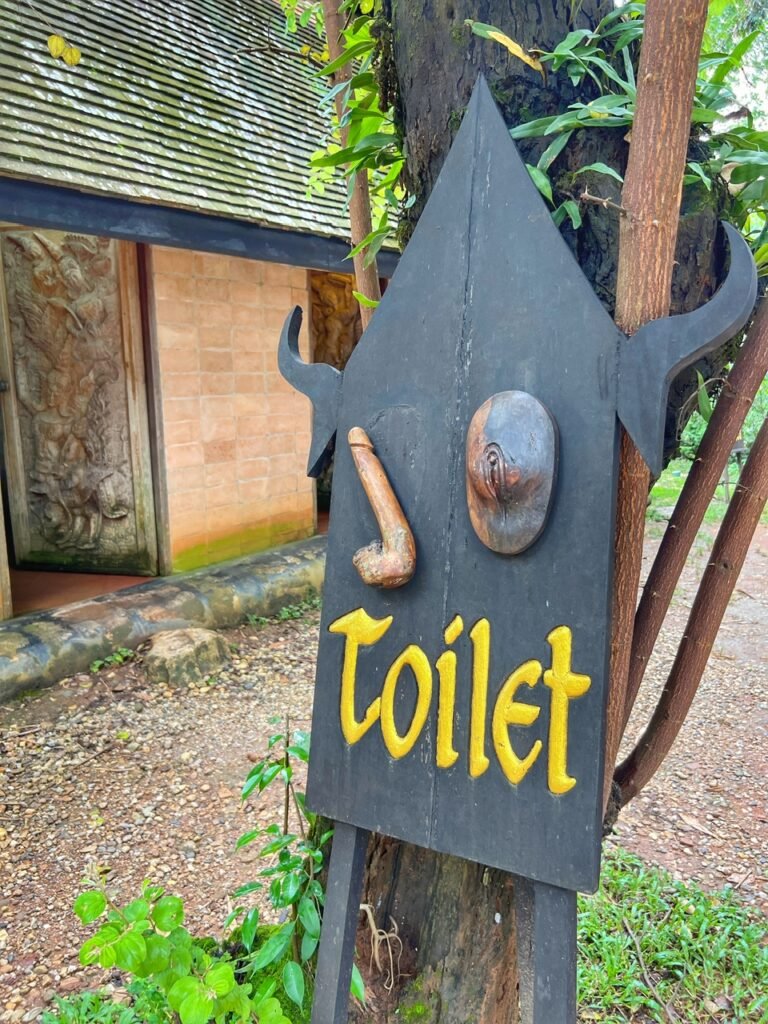

Throughout the world, we’ve seen a lot of eye-catching signs to direct you to the loos, some of which can even be confusing. This one is a bit more blatant. And to flush, you use a ladle…with a unique handle.

Teeter totters without metal parts
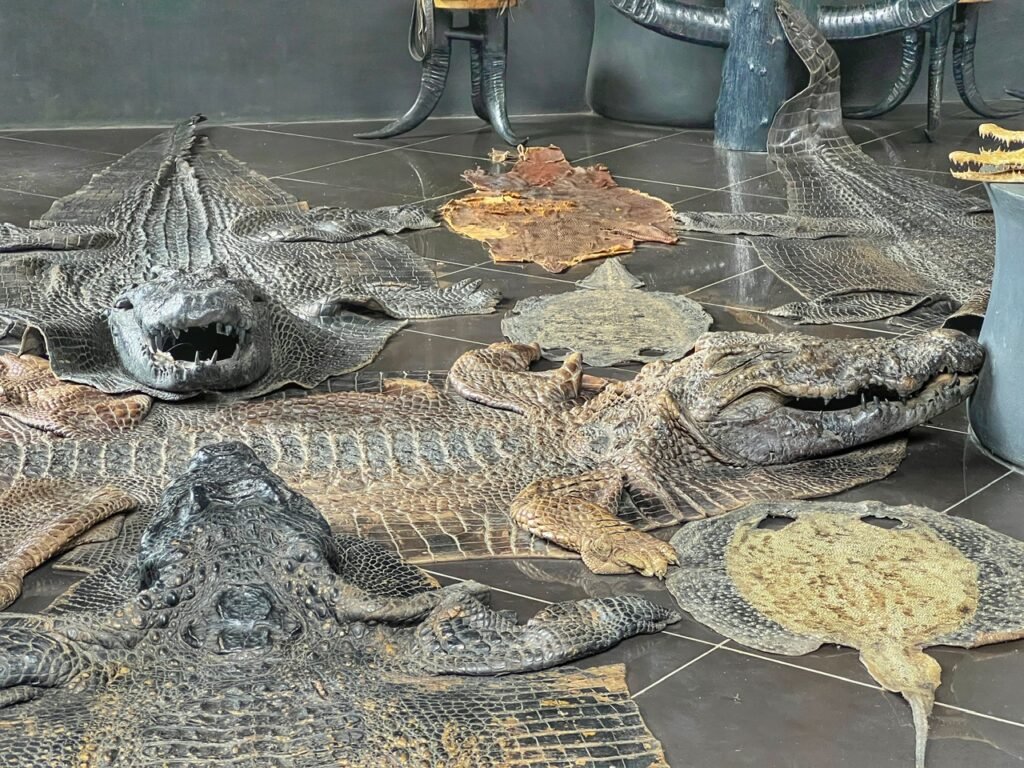

It seems this guy wanted to make his manhood clear. Thus, you better hope those cute little baby horns stay inside you, buddy.

The grounds were incredibly tranquil and poetic amidst the black houses.

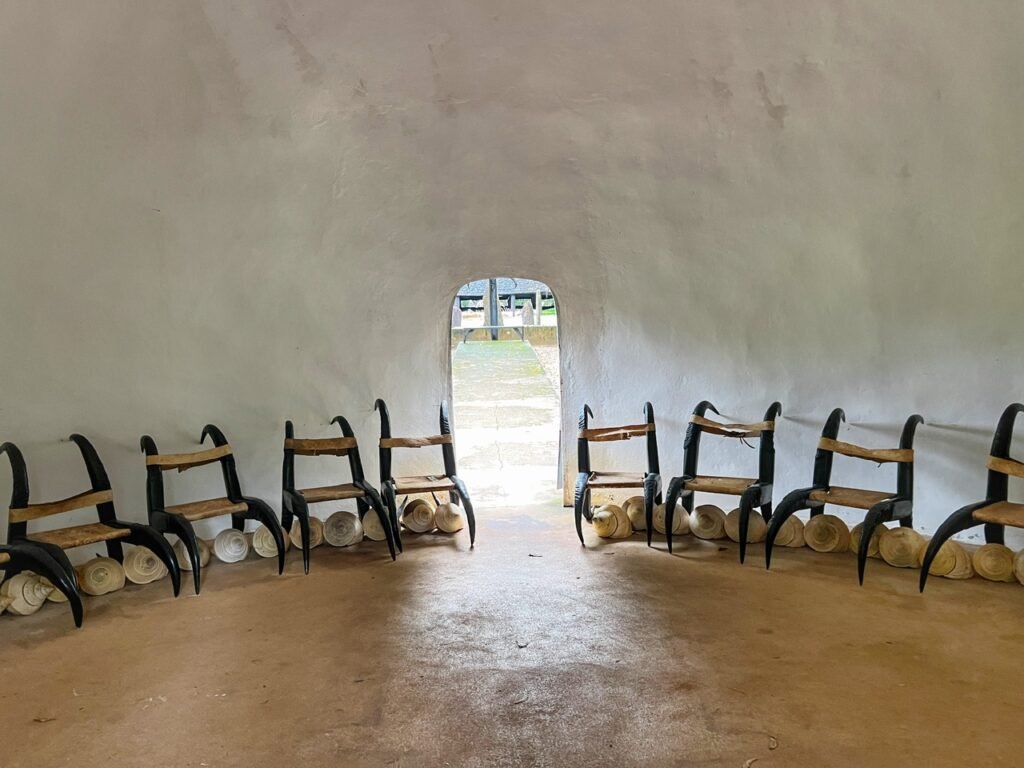
Another set of buildings were vastly different…out of place once-white domes molded from concrete, with a fascinating echo chamber inside from which we uttered a few shiver-inducing “OMS”…
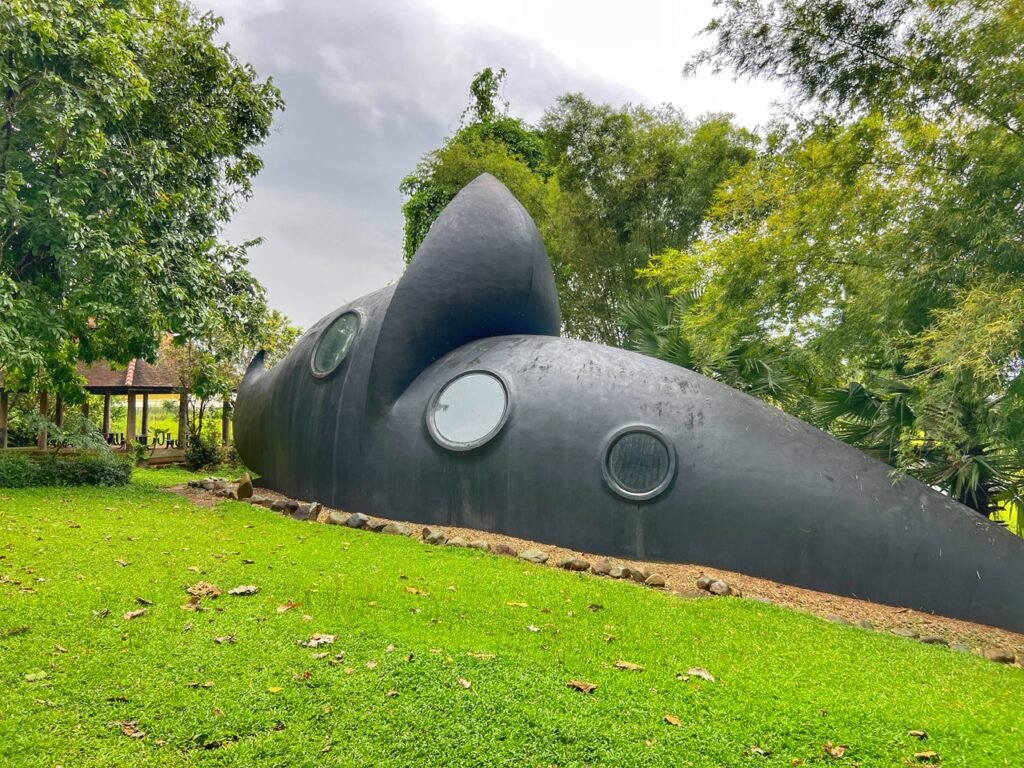
This was all near what appears to be a submarine’s sister in the shape of a…uh mouse?
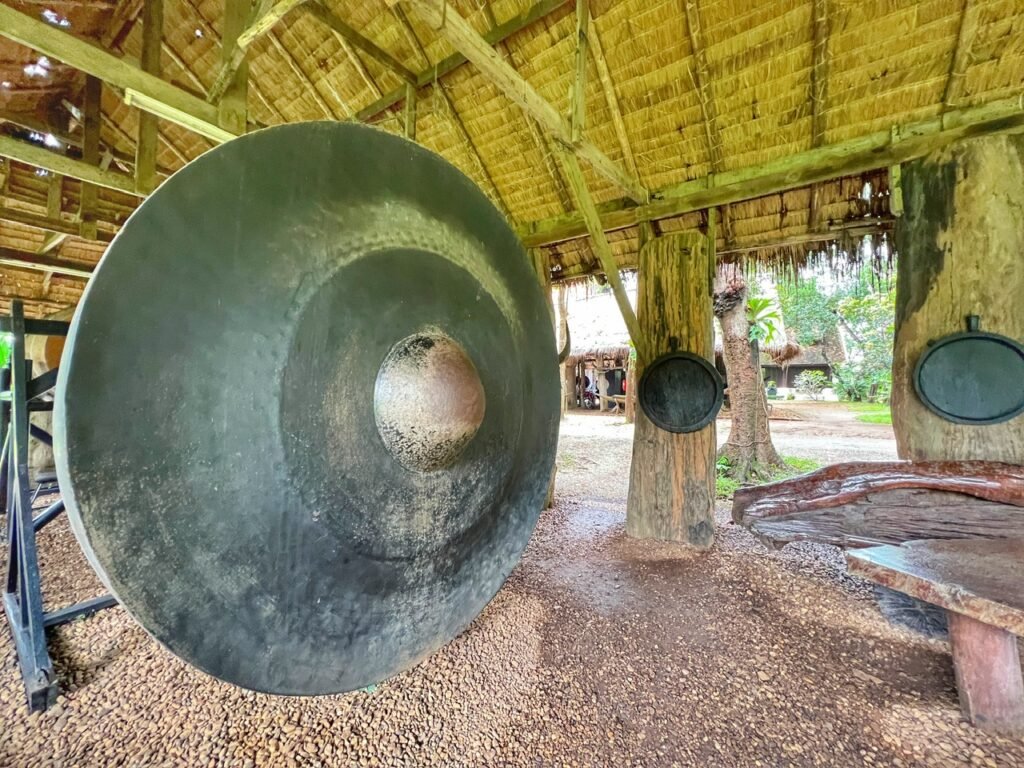
But the best part was a percussion chamber where you were free to gong! Yes, that’s right! There was no “do not touch” signs!! This was worth the $2.40 entrance fee in itself! 🤣



